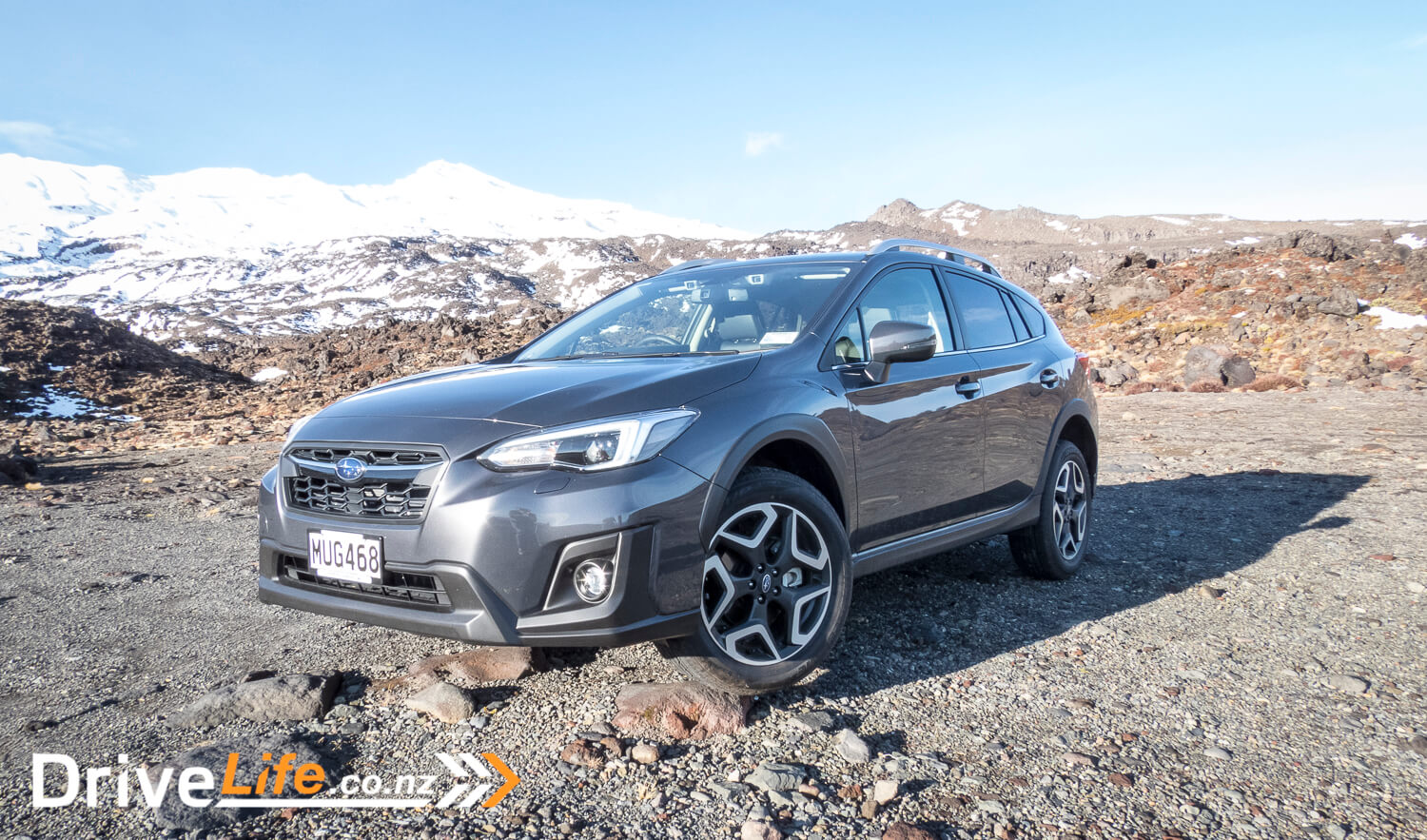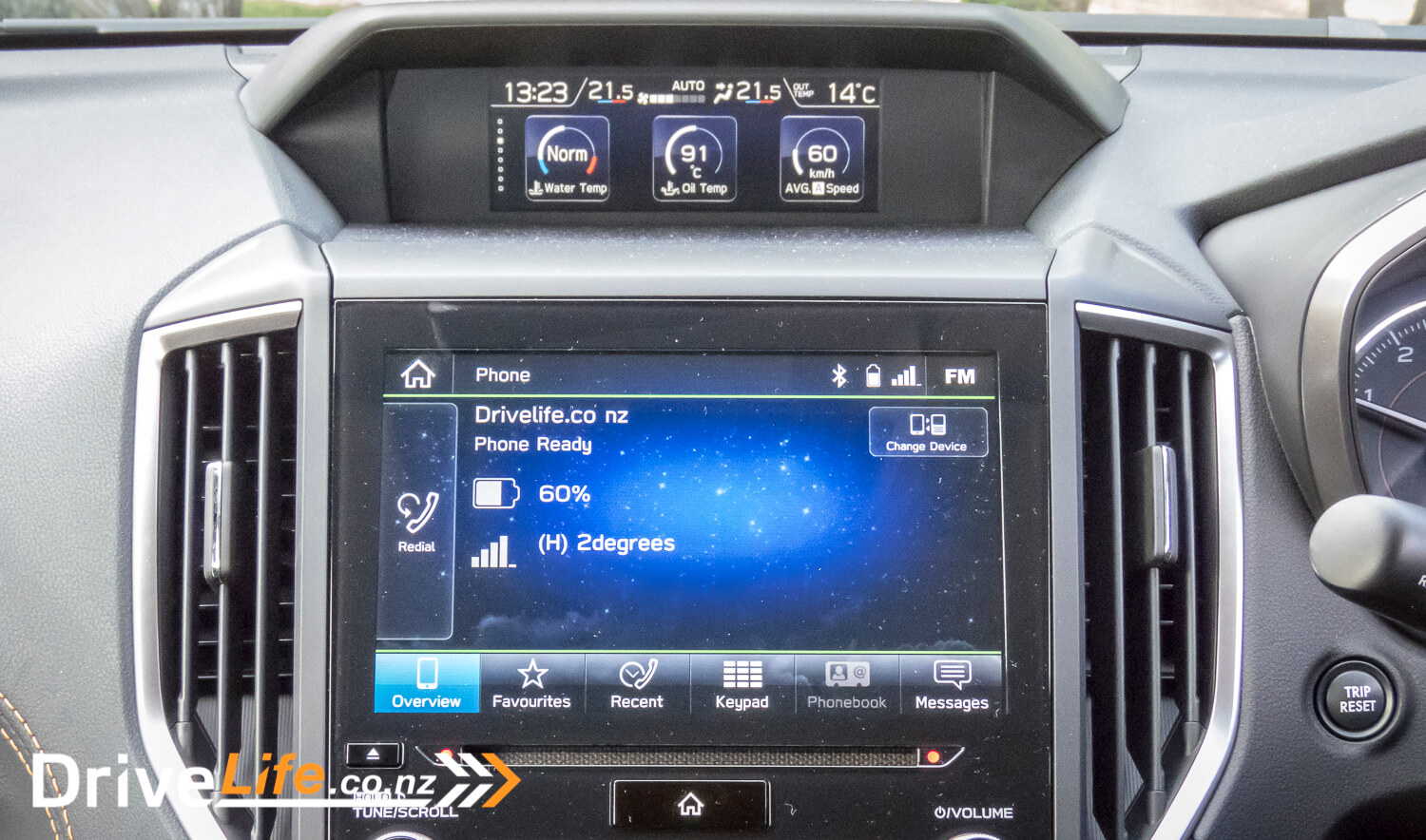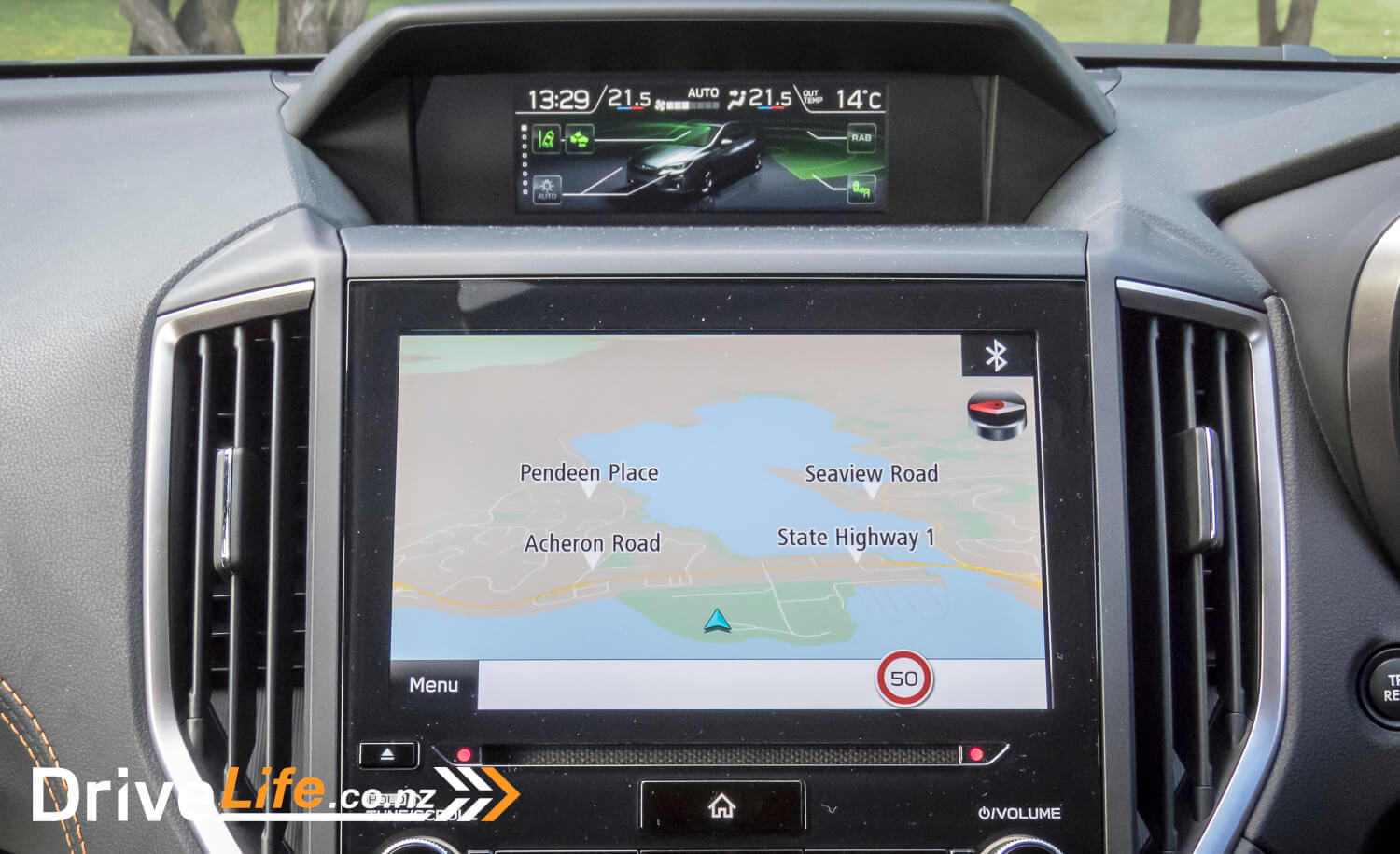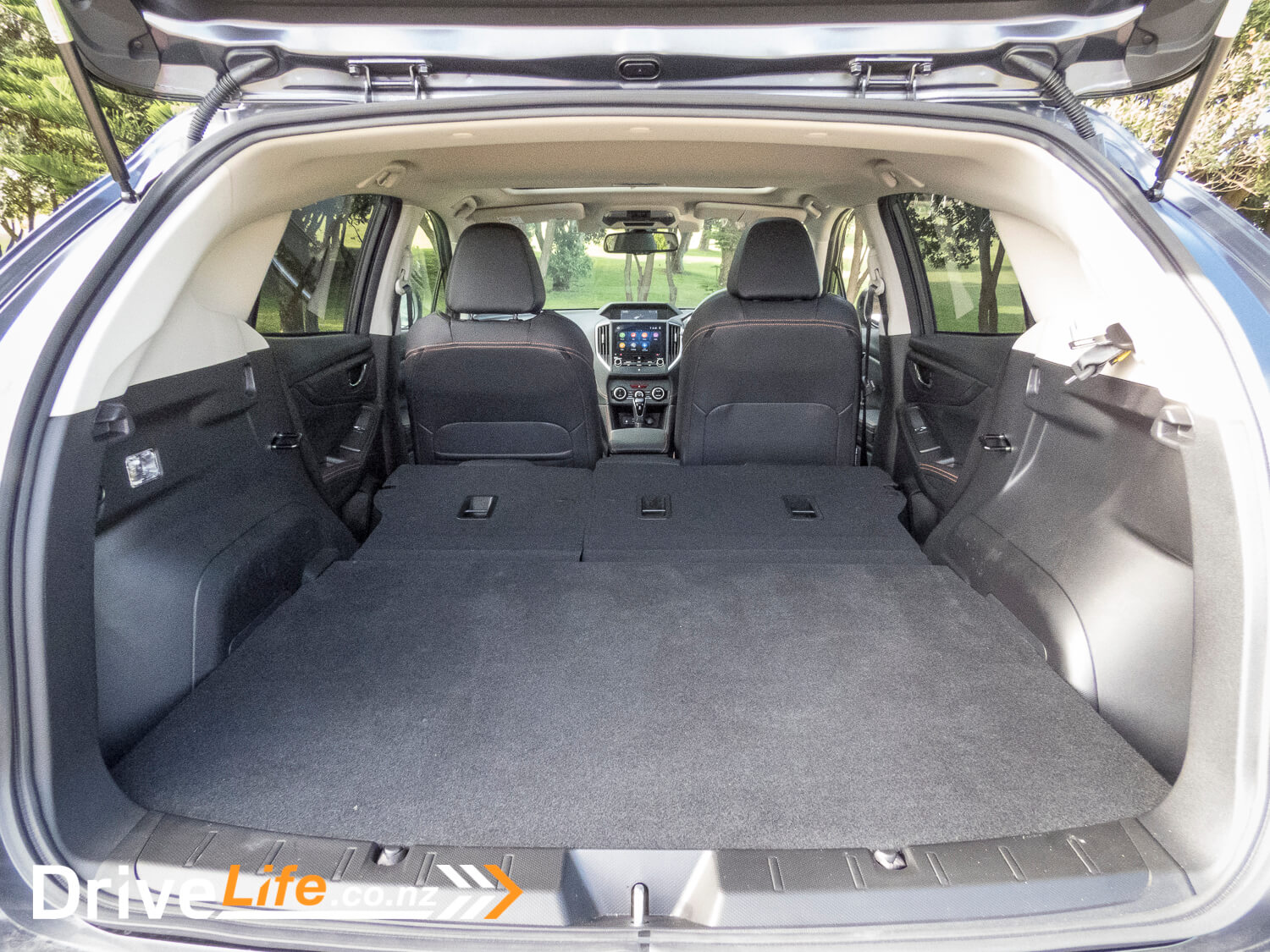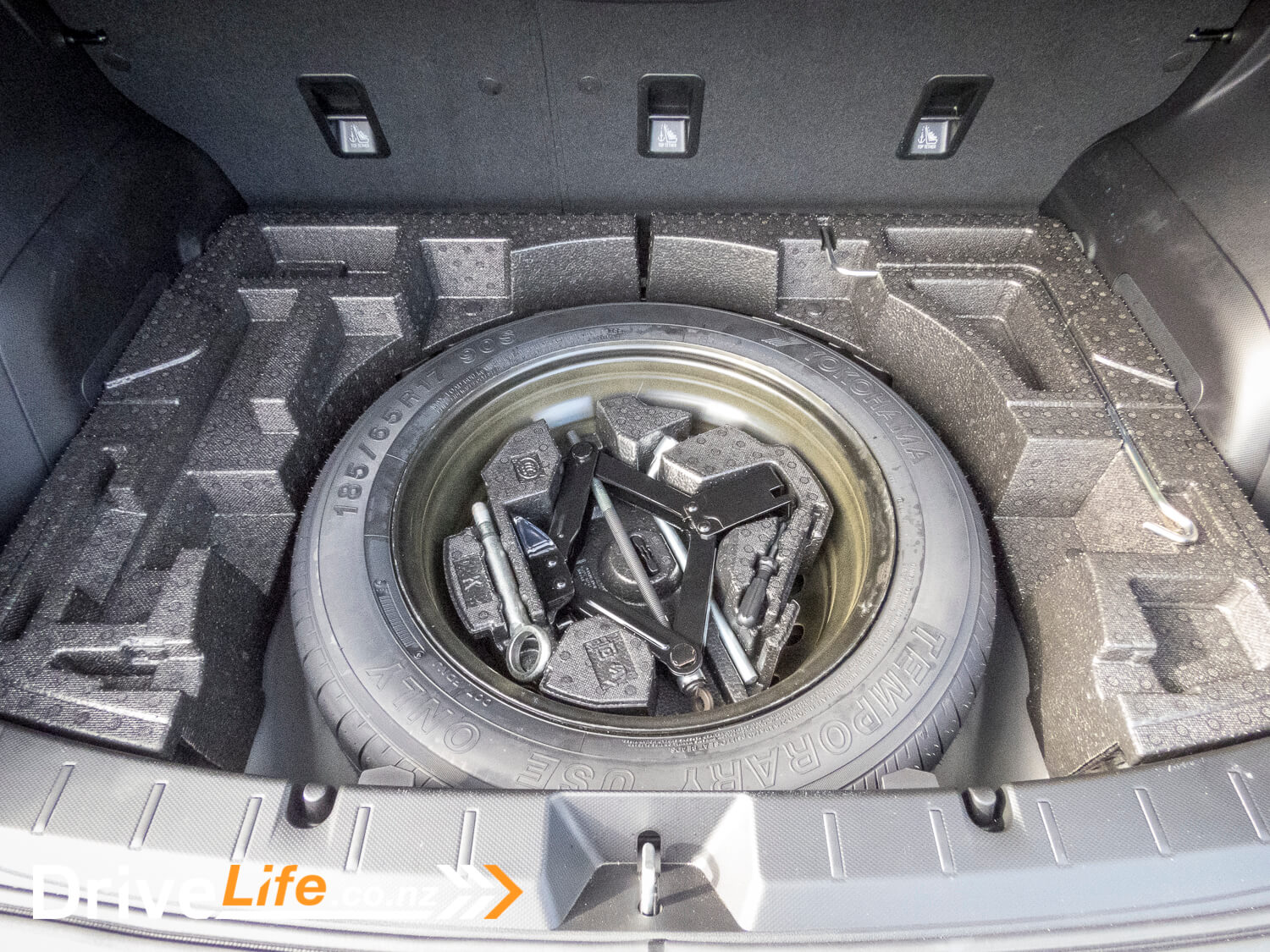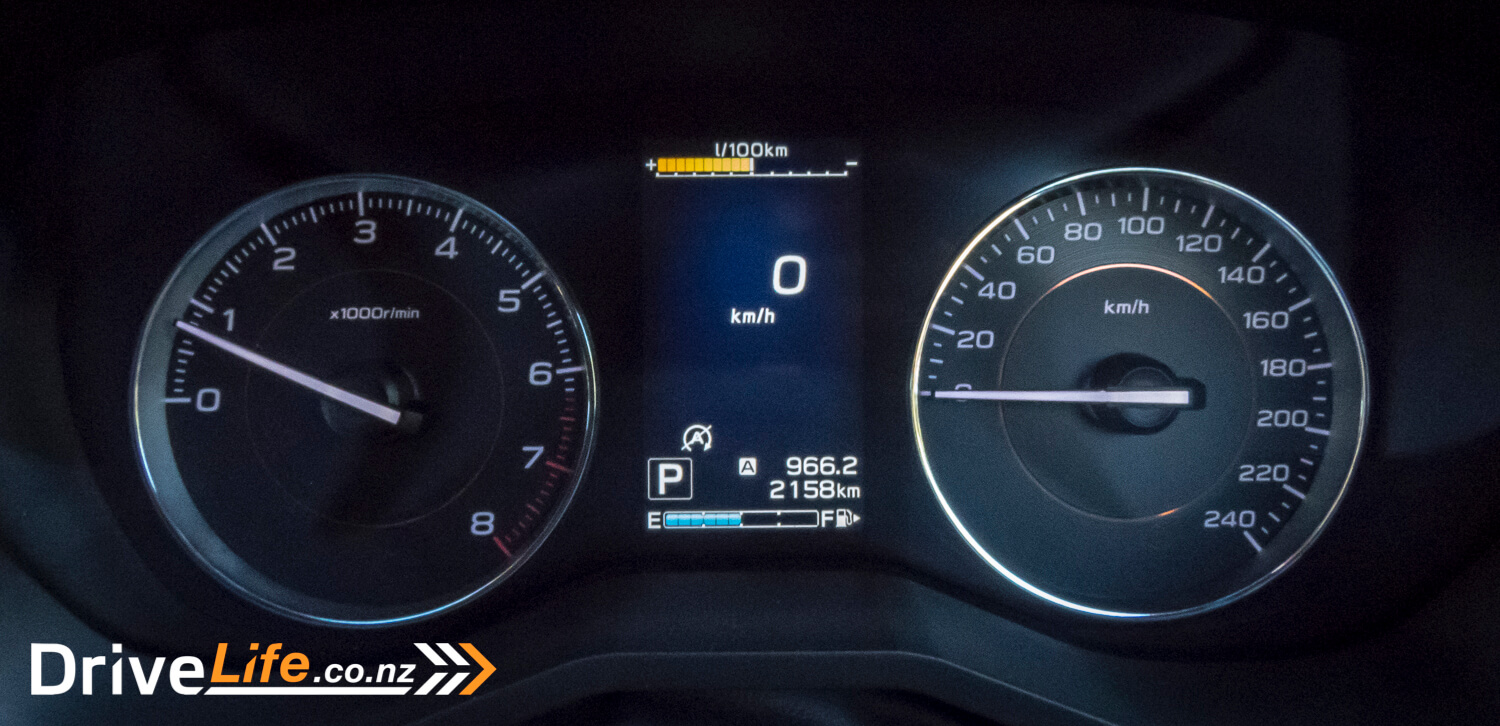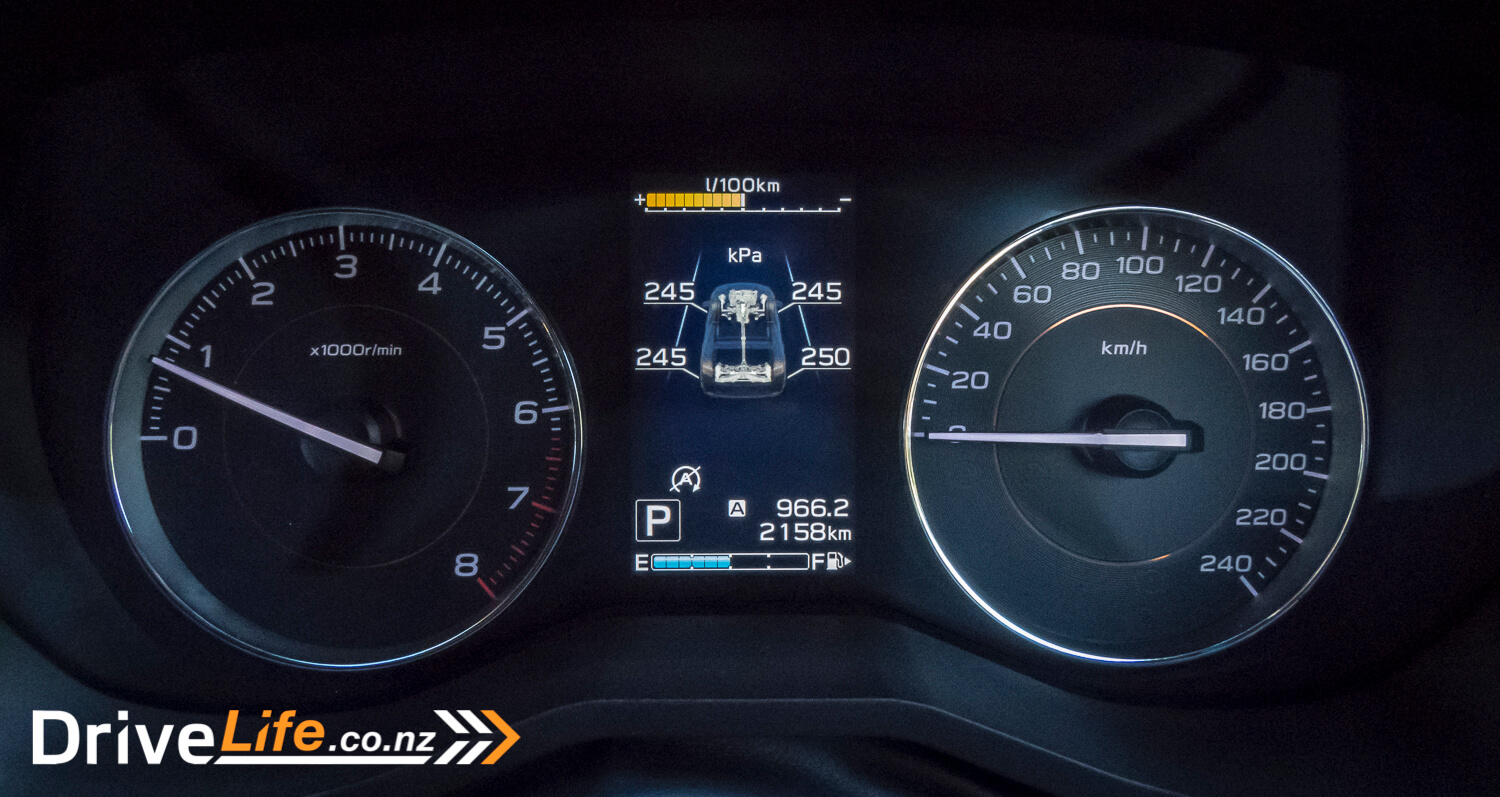It’s winter time in New Zealand, the country was fresh out of its first Covid-19 lockdown, and I had been given the keys to a new 2020 Subaru XV Premium. Of course, the natural thing to do is load the car up with mates, pack the snow gear, and head up north to Mt Ruapehu for a weekend.
Mt Ruapehu has been sponsored by Subaru for over 20 years. So, let’s see how the 2020 XV fares on the journey to its home turf.
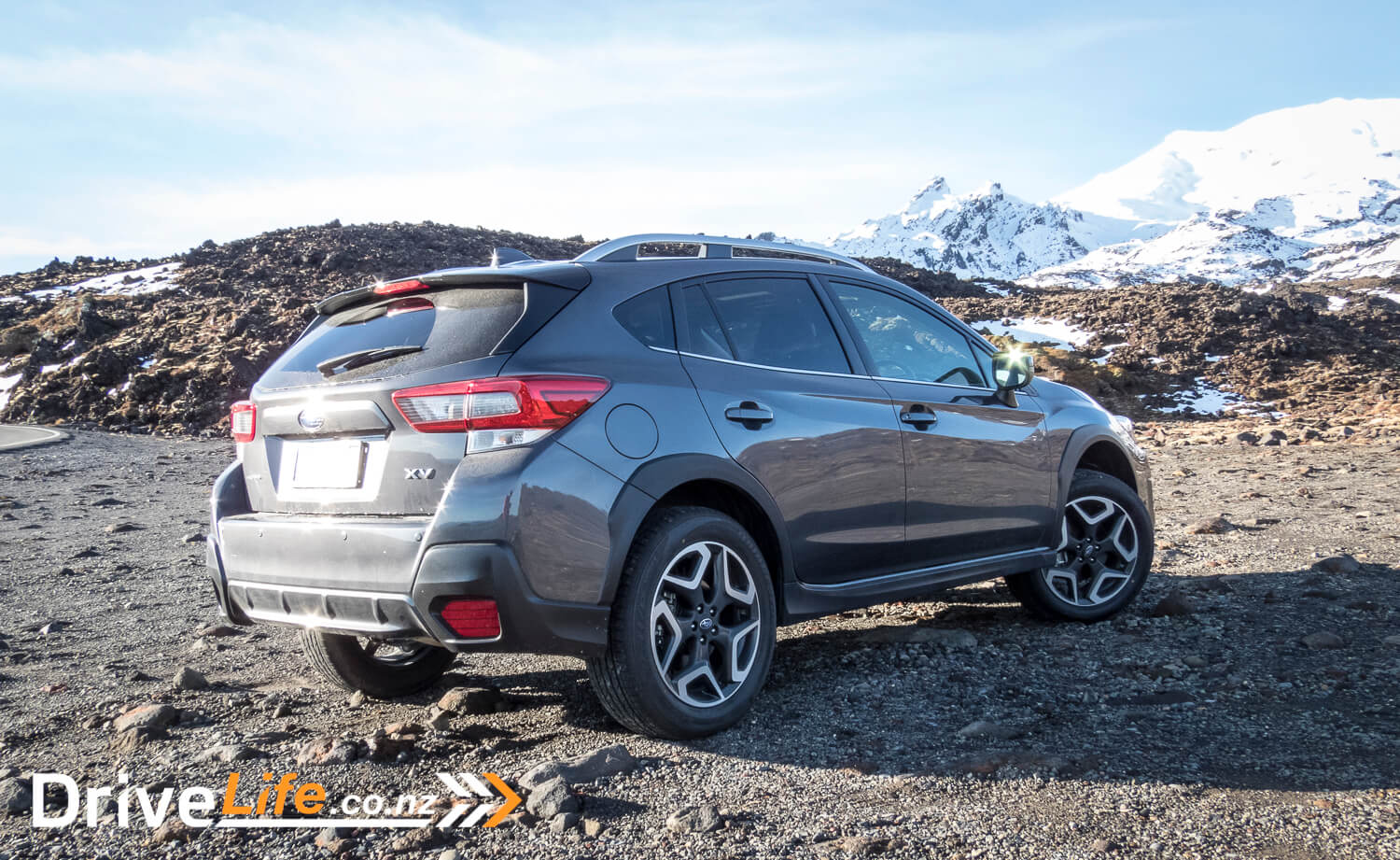
What’s In The 2020 Subaru XV Range?
Subaru offers the XV in three configurations. The entry-level model is the XV 2.0i Sport, priced at $37,490. The range then splits-off into two directions, with the XV 2.0i Premium and the XV Sport e-Boxer Hybrid both priced at $42,490. The XV premium is the high-spec model, while e-Boxer Hybrid is essentially an XV 2.0i Sport with a Hybrid drivetrain. Our test vehicle is the XV Premium.
The Subaru XV is powered by a horizontally-opposed Boxer 2-litre 4-cylinder petrol engine, paired with Subaru’s Lineartronic CVT transmission. The XV range offers a number of features as standard, including; 17’’ alloys, 7 airbags, an 8-inch touchscreen with Bluetooth, Apple CarPlay and Android Auto compatibility, 6.3’’ LCD multi-function display, 6-speaker audio, dual-zone climate control, reverse camera, rear-parking sensors, keyless entry with push-button start, electronic park brake, power-folding mirrors, privacy glass, auto headlights, daytime running lights, rear LED lights, auto stop-start, auto vehicle hold, ABS, ESC, EBD, traction control system, brake assist, a limited-slip-differential, X-mode, tyre pressure monitor, and roof rails.
Upgrading to the Premium adds 18’’ alloys, leather upholstery with heated front seats, an 8-way power driver’s seat, satnav with traffic alerts, rain-sensing wipers, an auto-dimming rear-view mirror, heated wing mirrors, self-levelling and steer-responsive LED headlights, high-beam assist, blind-spot monitoring, lane-change assist, rear cross-traffic alert, reverse automatic braking, a sunroof and a few extra trim pieces such as silver roof rails, sport pedals and chrome door handle inserts.
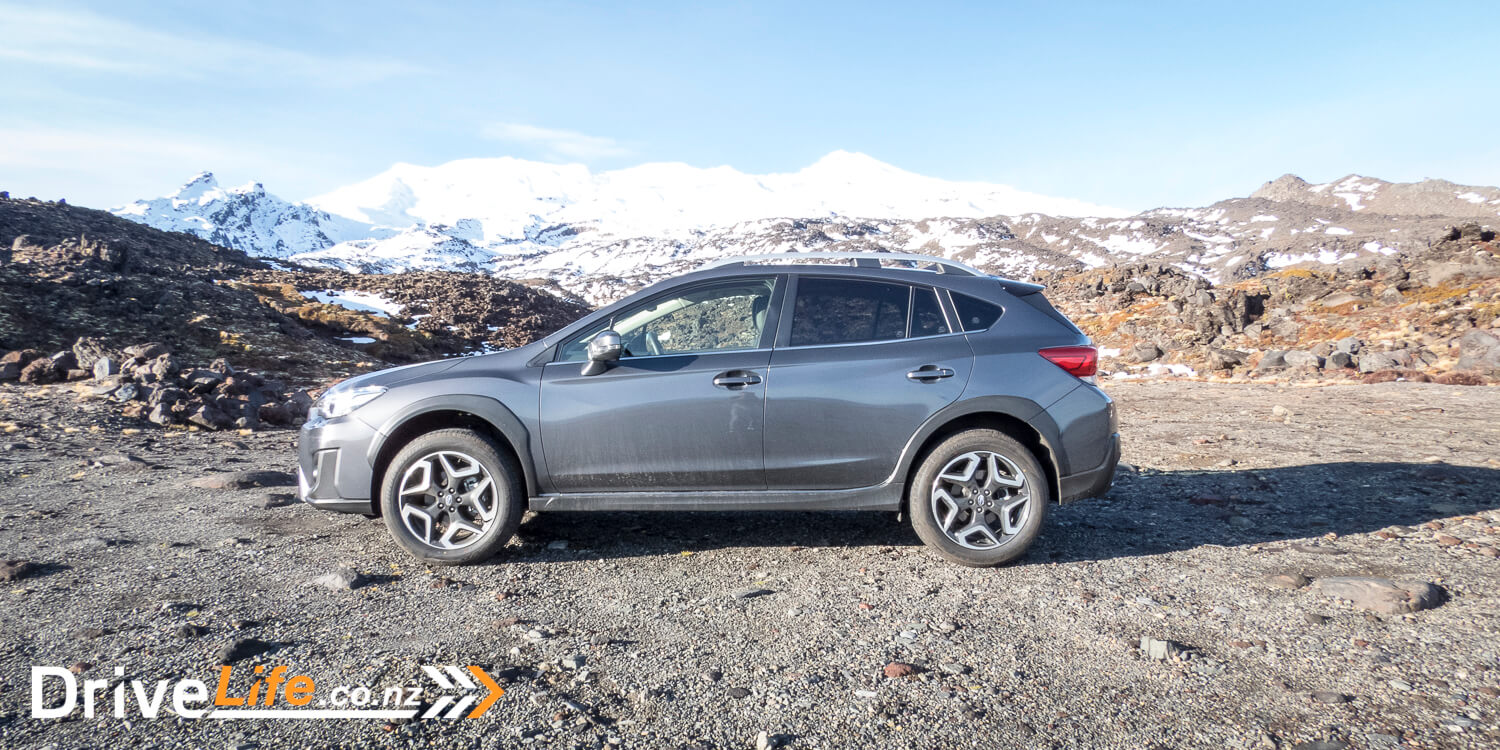
All XV models also receive Subaru’s Eyesight Driver Assist System, which includes; adaptive cruise control, lane keep assist, lane sway and departure warning, pre-collision braking, pre-collision brake assist, pre-collision throttle management, lead vehicle start alert and brake light recognition.
The 2020 Subaru XV range is available in nine colours, these include; Dark Grey Metallic, Dark Blue Pearl, Quartz Blue Pearl, Cool Grey (which is more of a light blue), Crystal Pearl White, Ice Silver Metallic, Crystal Black Silica, Pure Red, and perhaps the coolest of them all, Sunshine Orange.
You can read up on full specifications of the Subaru XV range on the Subaru New Zealand website.
First Impressions Of The 2020 Subaru XV 2.0i Premium
Damn! It’s not Orange… Don’t get me wrong, the Dark Grey Metallic on our XV is a handsome colour, but the XV range has a number of exciting colours. And you can probably tell which one I like the best.
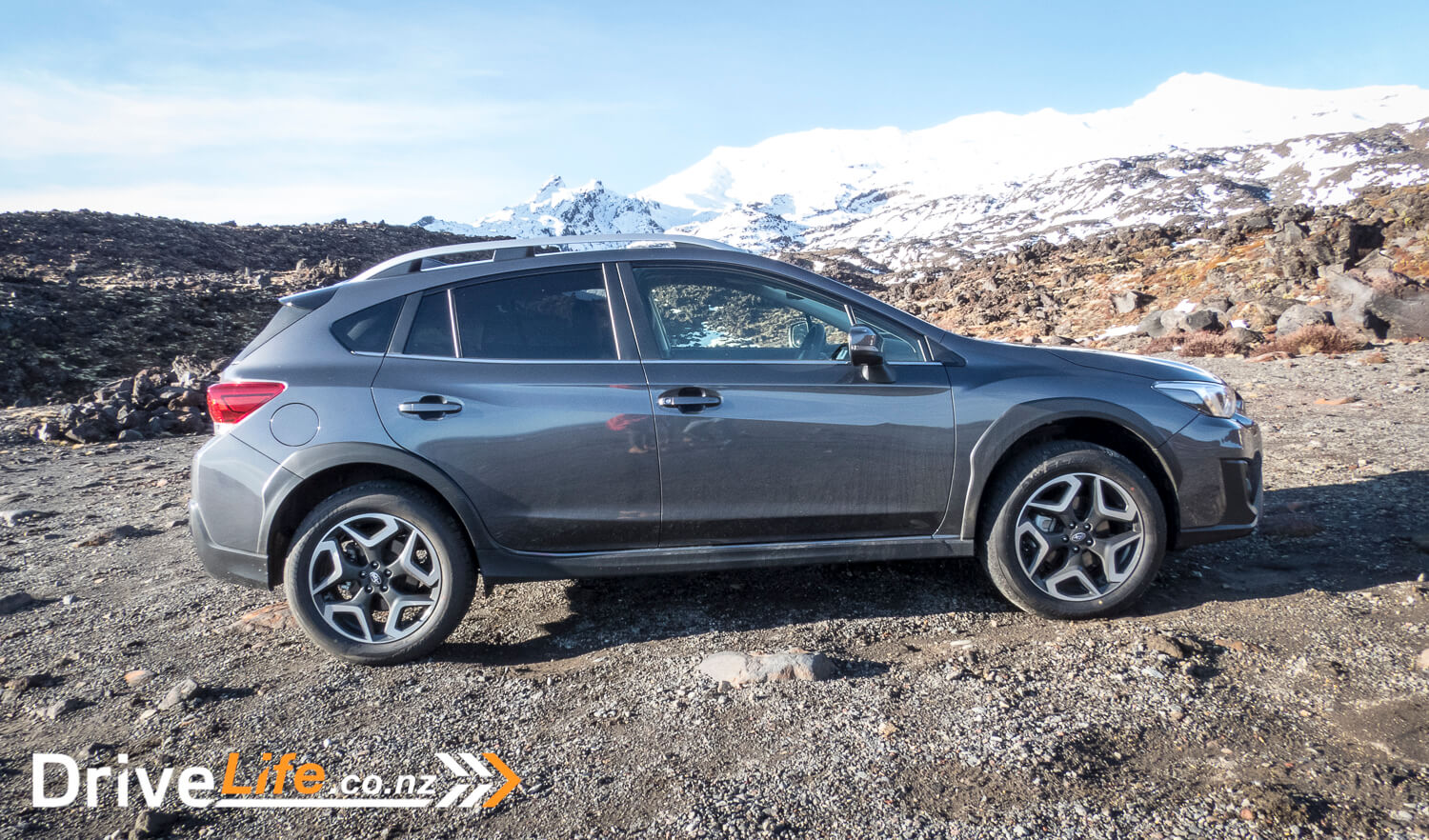
Approaching the XV, you notice just how high the vehicle sits off the ground. The XV has class leading ground clearance, being around 50mm higher than the Hyundai Kona and other rivals. Despite the high ground clearance, the overall body height does not appear too much taller than the competition.
On that high chassis, visually what you have is a lifted Impreza body, with Subaru’s off-roading catalogue thrown at it. You get roof rails, exterior plastic cladding around the bumpers, side skirts and wheel arches, and a set of chunky 18’’ alloys with large tyres to fill out the arches.
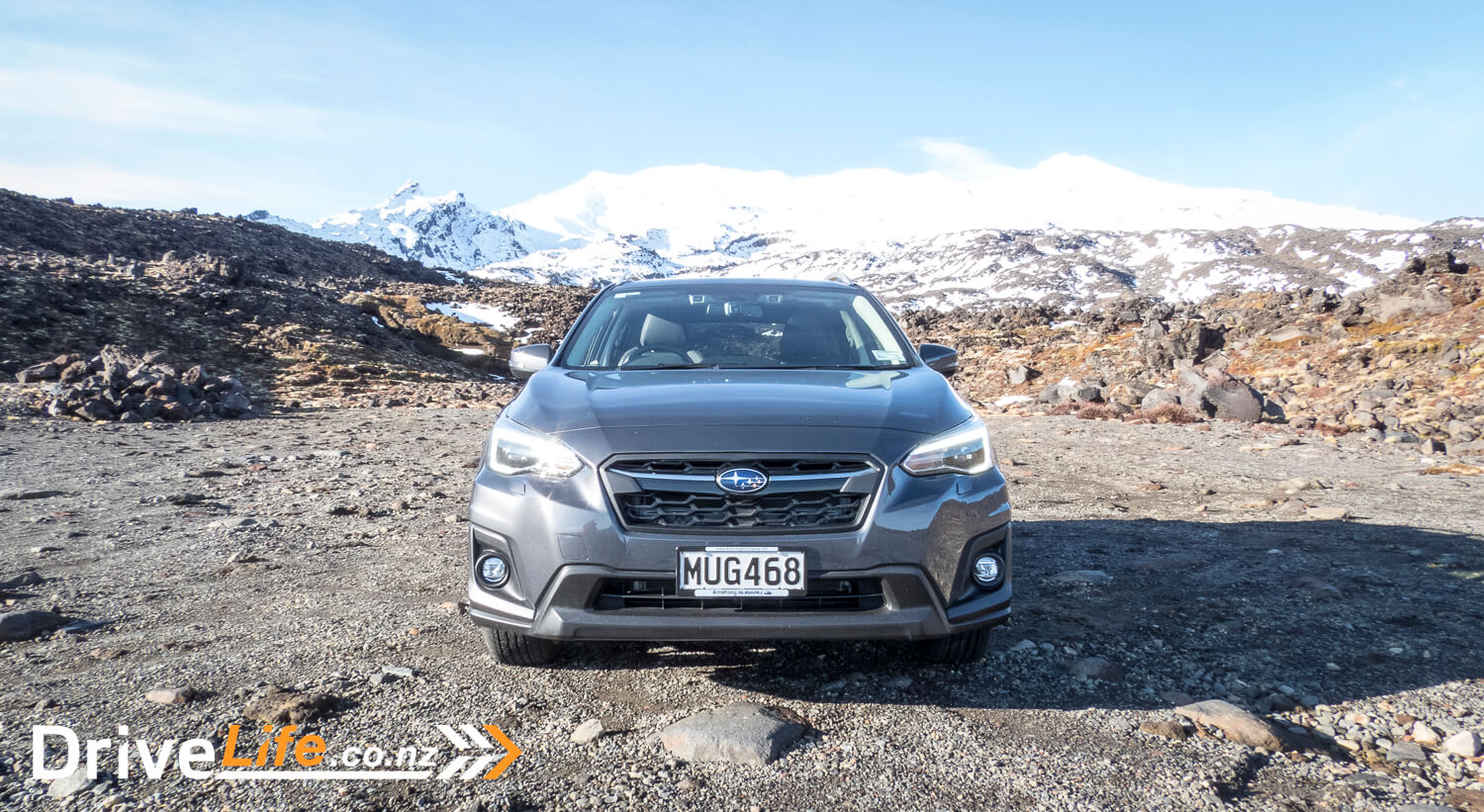

This current XV has much nicer proportions than the previous generation model, which did look a tad bulbous from some angles. The design of the new front and rear lights, plus the slightly longer wheelbase on the new model definitely improves the exterior styling over the previous vehicle.
Subaru’s design language has certainly evolved over the past 5 years. All new models receive the new daytime running light design, which is now signature across the Subaru range.
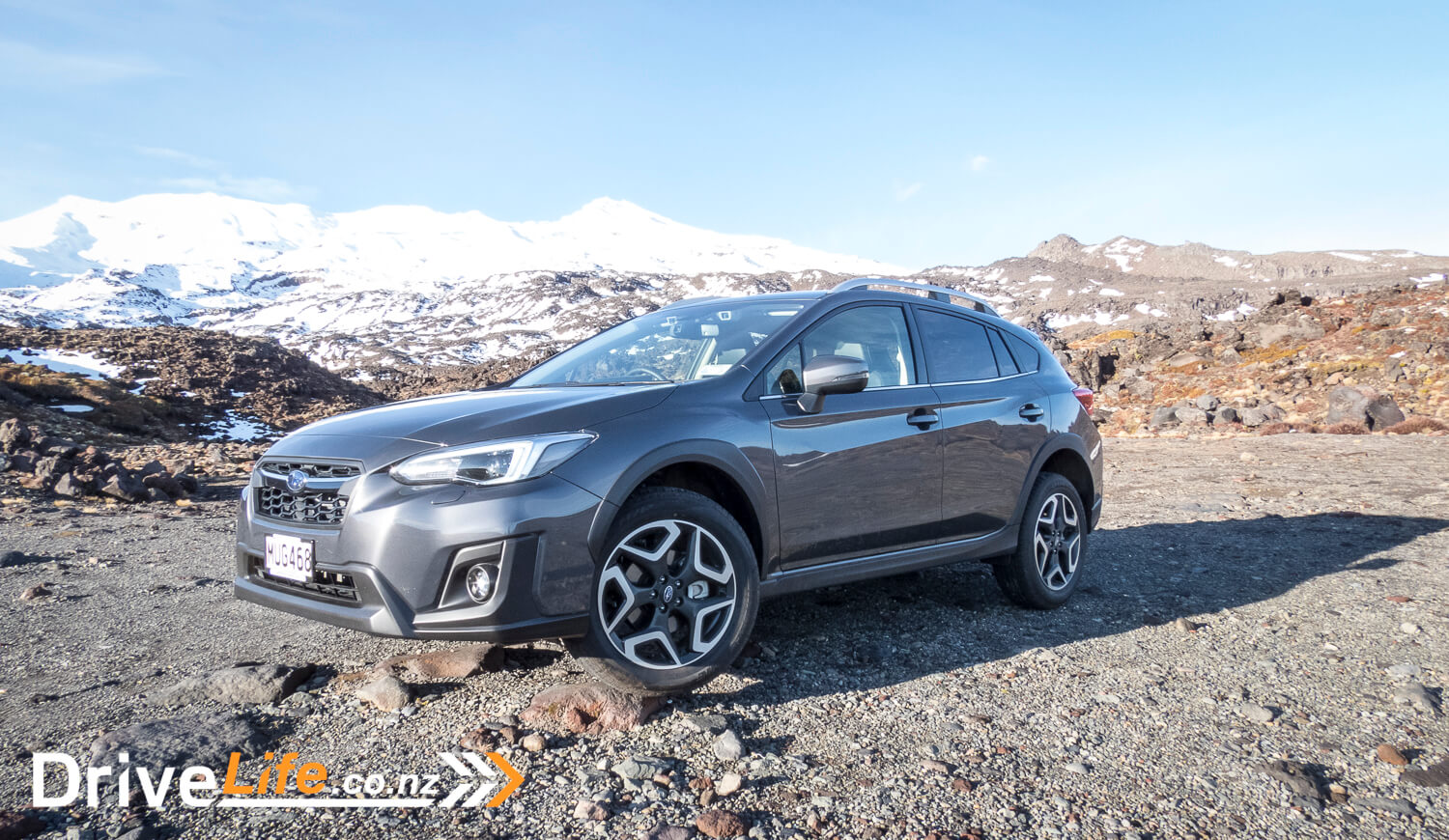
Overall, the 2020 XV looks rugged, yet modern. Personally, I think it looks pretty cool.
The Interior
Stepping inside the XV, you immediately notice three different displays. First, you’ve got your centre 8’’ touchscreen infotainment, a 6.3’’ LCD driving info display sitting directly above it, and the centre instrument cluster display. It does appear a bit busy at first, though you quickly get used to it. And that’s a bit of a theme with the XV.
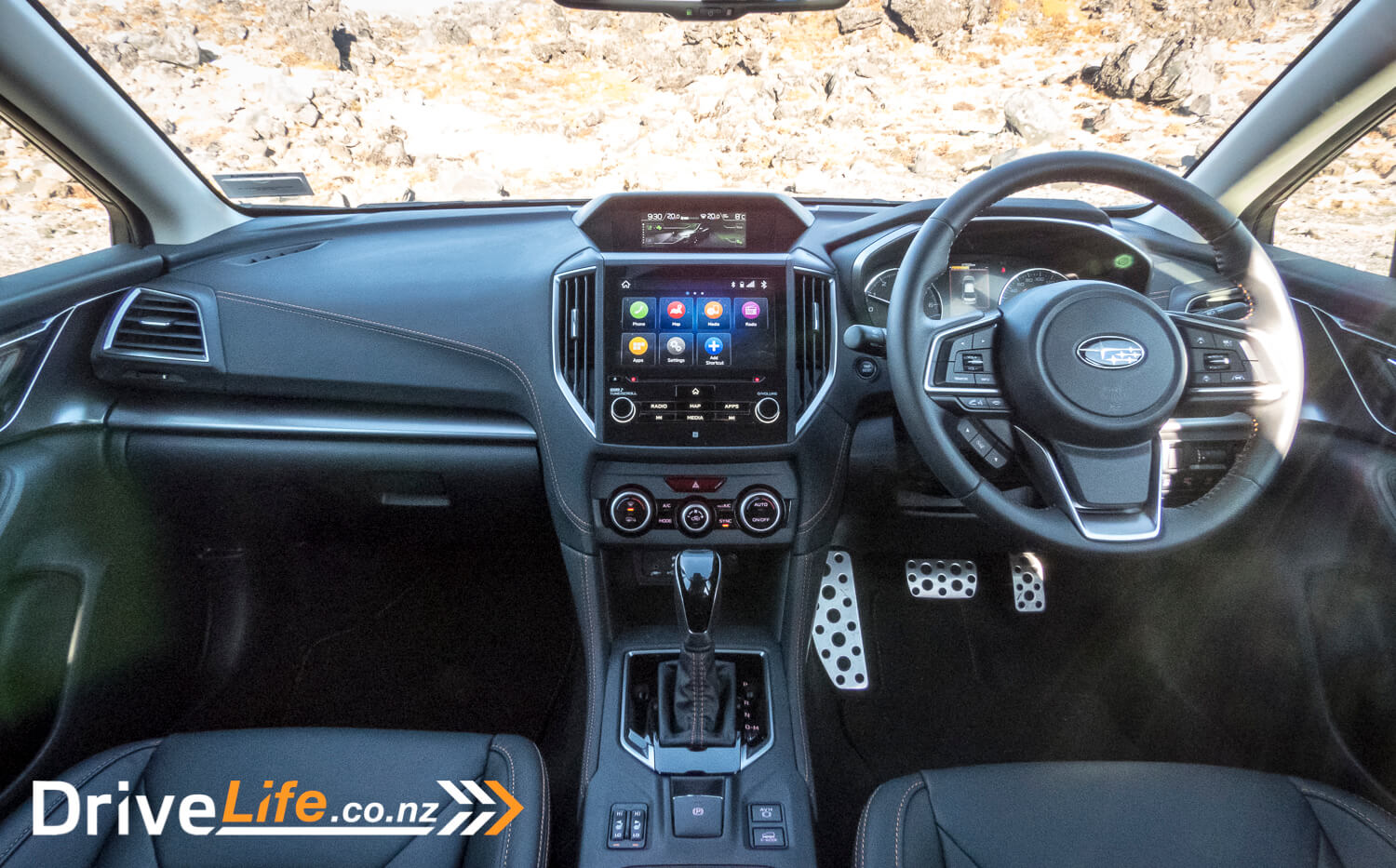
Aside from all the screens, there’s nothing particularly outlandish design-wise. There’s a combination of different materials used throughout the cabin. The seats, dash and armrests are wrapped in leather, with orange contrasting stitching. There’s a lower aluminium-coloured trim piece to contrast the leather dash, linking around to the door cards, which connects to a piece of carbon-fibre inspired plastic around the door handles. Piano black plastic trim surrounds the centre console, infotainment and gearstick.
I wouldn’t say there’s anything opulent about the interior, but there are some nice finishes and everything is well-executed. It was definitely a nice place to spend time for long periods, and personally, I think the orange stitching really gives the cabin an edge.
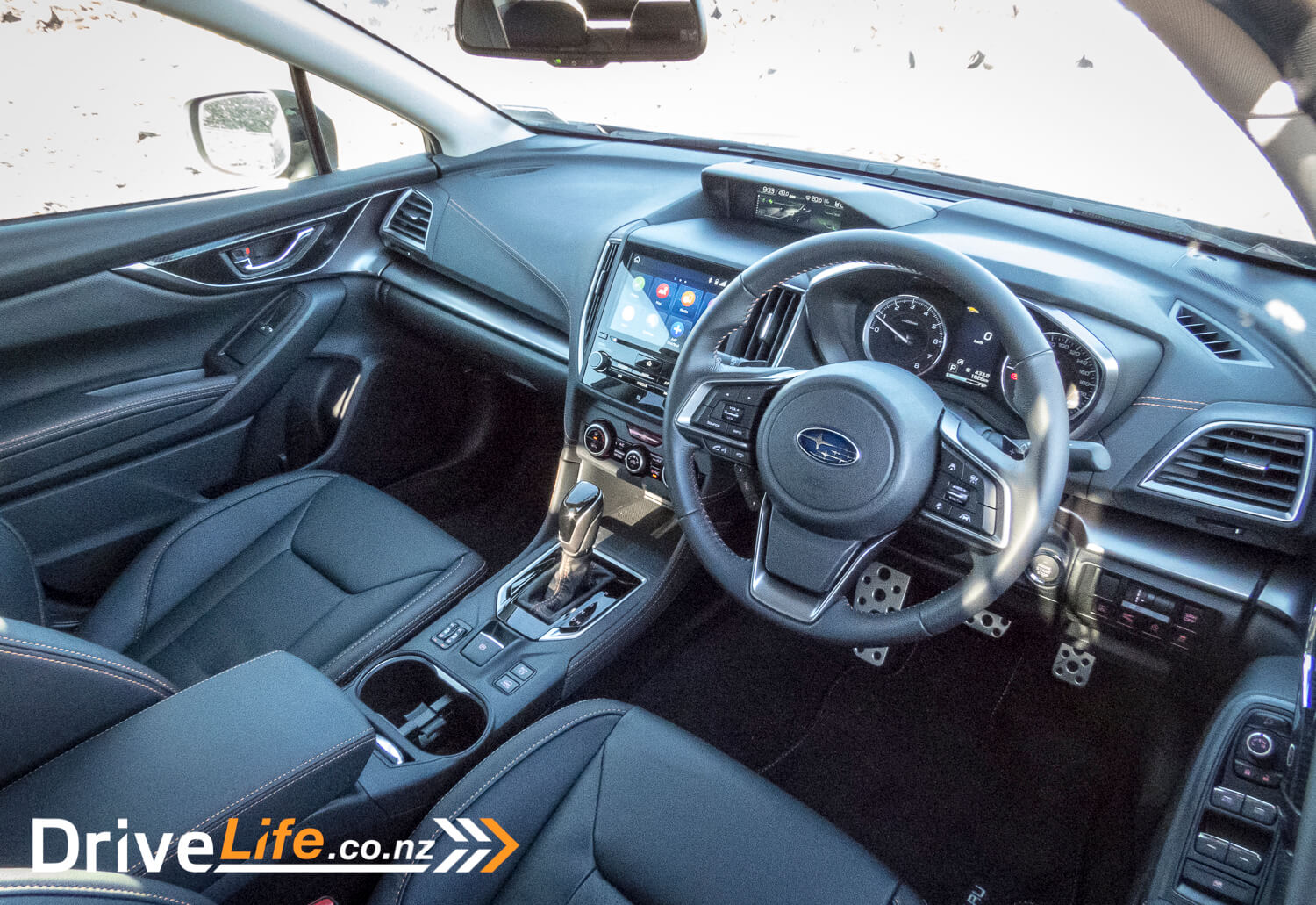
The infotainment system is easy to use, despite having some slight lag to the touch. Subaru has fitted some useful hard buttons for key menus below the main screen, and has even included a CD player! You know it’s 2020 when you’re surprised about this. Call me old fashioned, but I think the automotive world has done away with CDs a bit too quickly, hence I was quite happy to see one here. Good stuff Subaru!

The XV Premium is also equipped with sat-nav, using a system developed by TomTom. The navigation was nicely set out and gave very detailed route information. You also have Apple Car Play and Android Auto, if that’s more your style. Subaru has also taken a slightly different approach with the parking sensors, having integrated them into the reverse camera display rather than having a separate side graphic.
The 6.3’’ multi-function display above the infotainment is a configurable display, which shows various information from fuel consumption and vehicle range, a route display and even an X-mode display which shows vehicle pitch and tilt. Most of this information you can get from the other displays, which means the centre screen is mostly a gimmick. Although, that didn’t stop me from thinking it was cool!
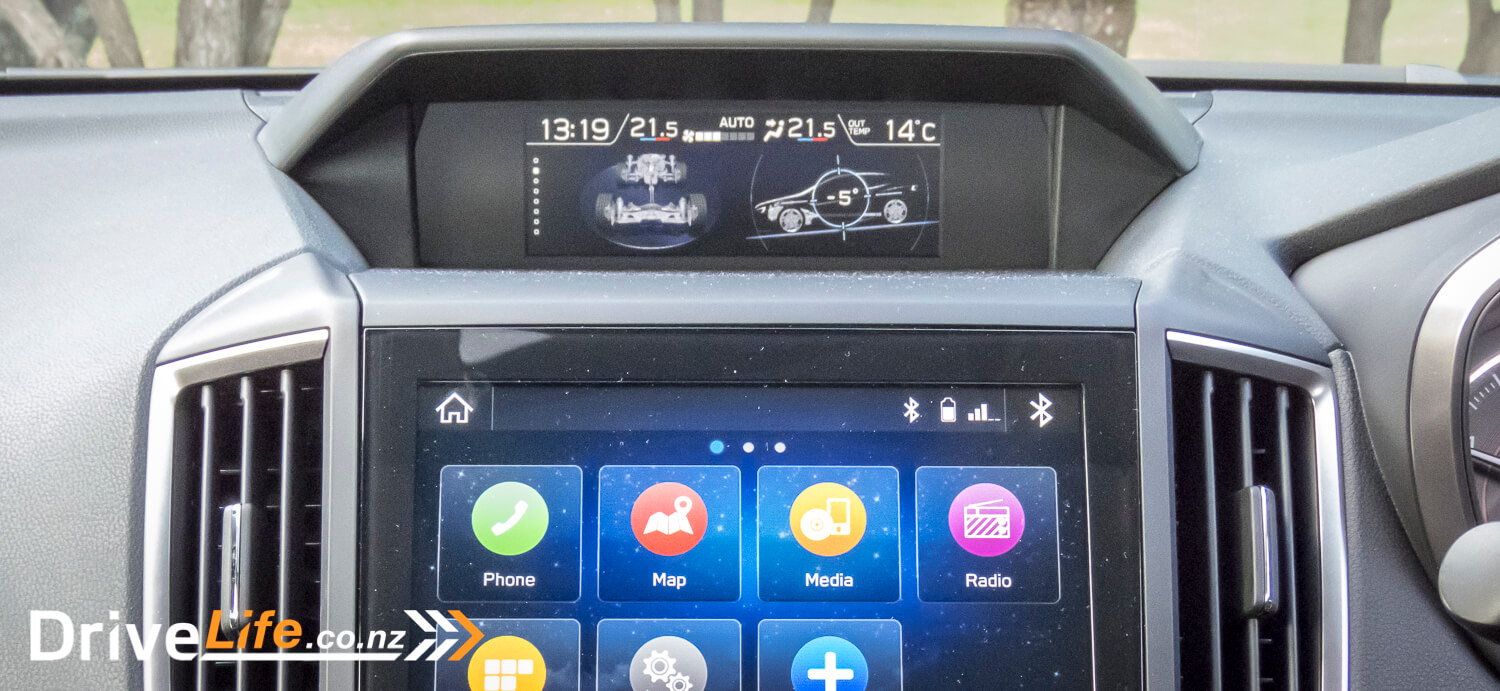
The front seats in the XV are excellently supported, and you could position yourself just right with the 8-way adjustable driver’s seat. I wouldn’t call them supple; but the level of support allows you to do long distances comfortably. I am prone to some occasional back discomfort on long journeys due to an old weight-lifting injury. Our journey to Mt Ruapehu in the XV was not a problem for me. The headrest could also be adjusted forward which I also appreciated.
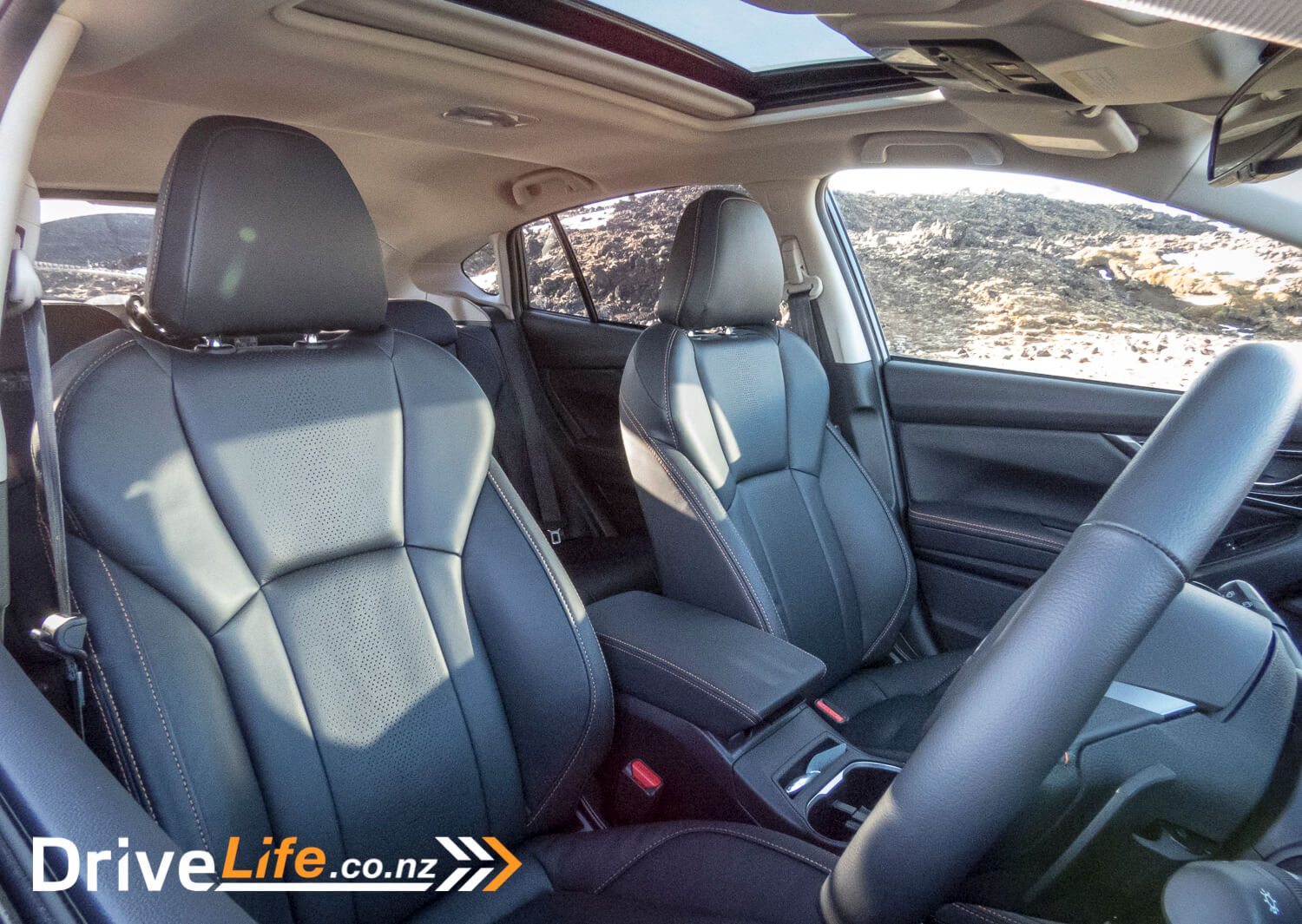
Rear seat passengers also get ample leg and headroom. I had no complaints from rear passengers in our fully-laden XV going up the North Island. I also had a comment from one of the passengers saying they thought heat circulation through the rear was also very good.
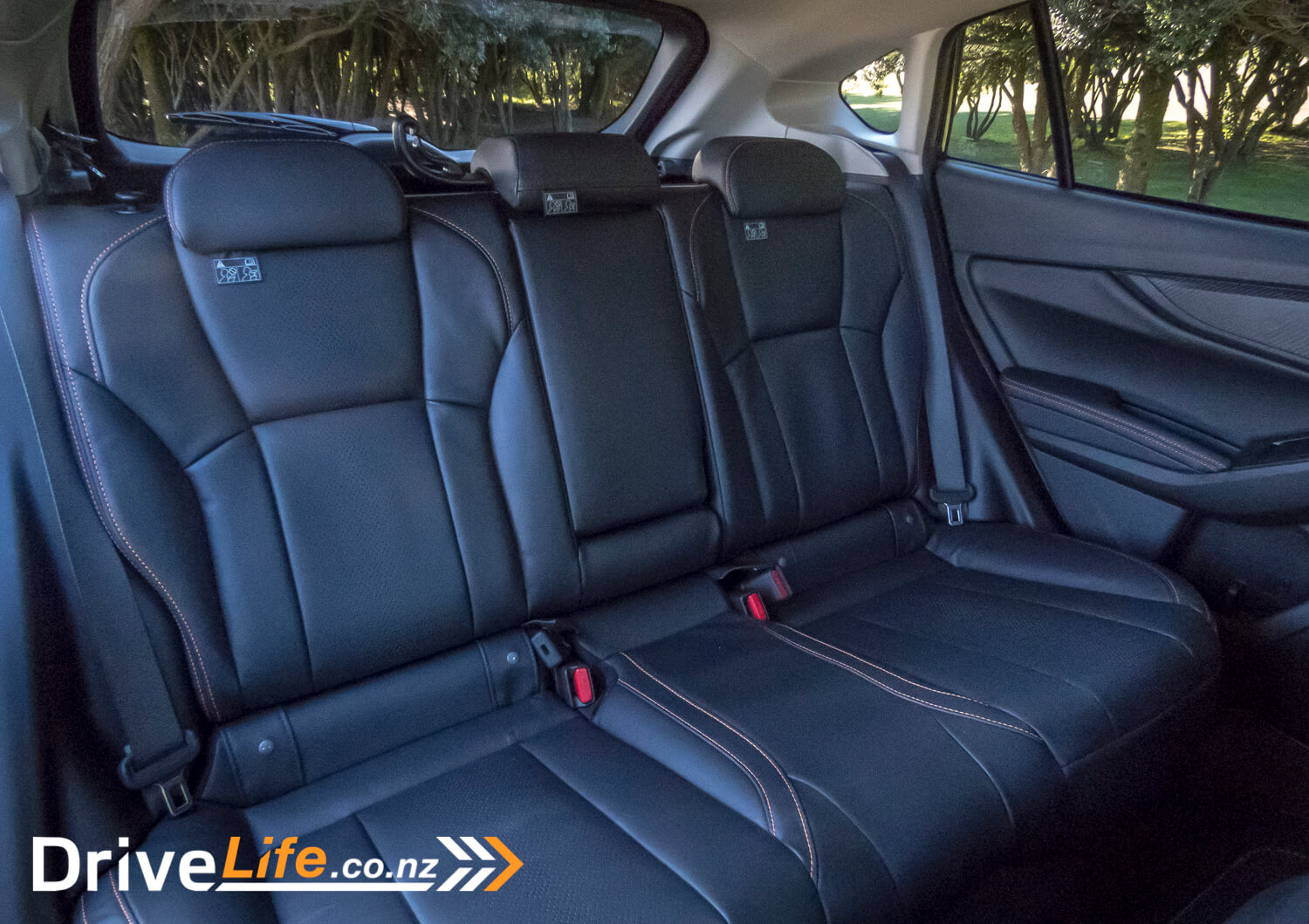
Boot space is 310L seats up, 765L seats down. This isn’t especially spacious compared with some other crossovers, and it’s also roughly 30L shy of what’s offered in the XV’s hatchback sibling, the Subaru Impreza. Despite this, the XV’s boot space is about on par with most hatchbacks, but perhaps a tad on the smaller side for the crossover class. All of us packed quite light for our trip, yet we still managed to fill the entire boot, enough to obscure the rear window. The boot load level is also quite high due to the extra ground clearance.
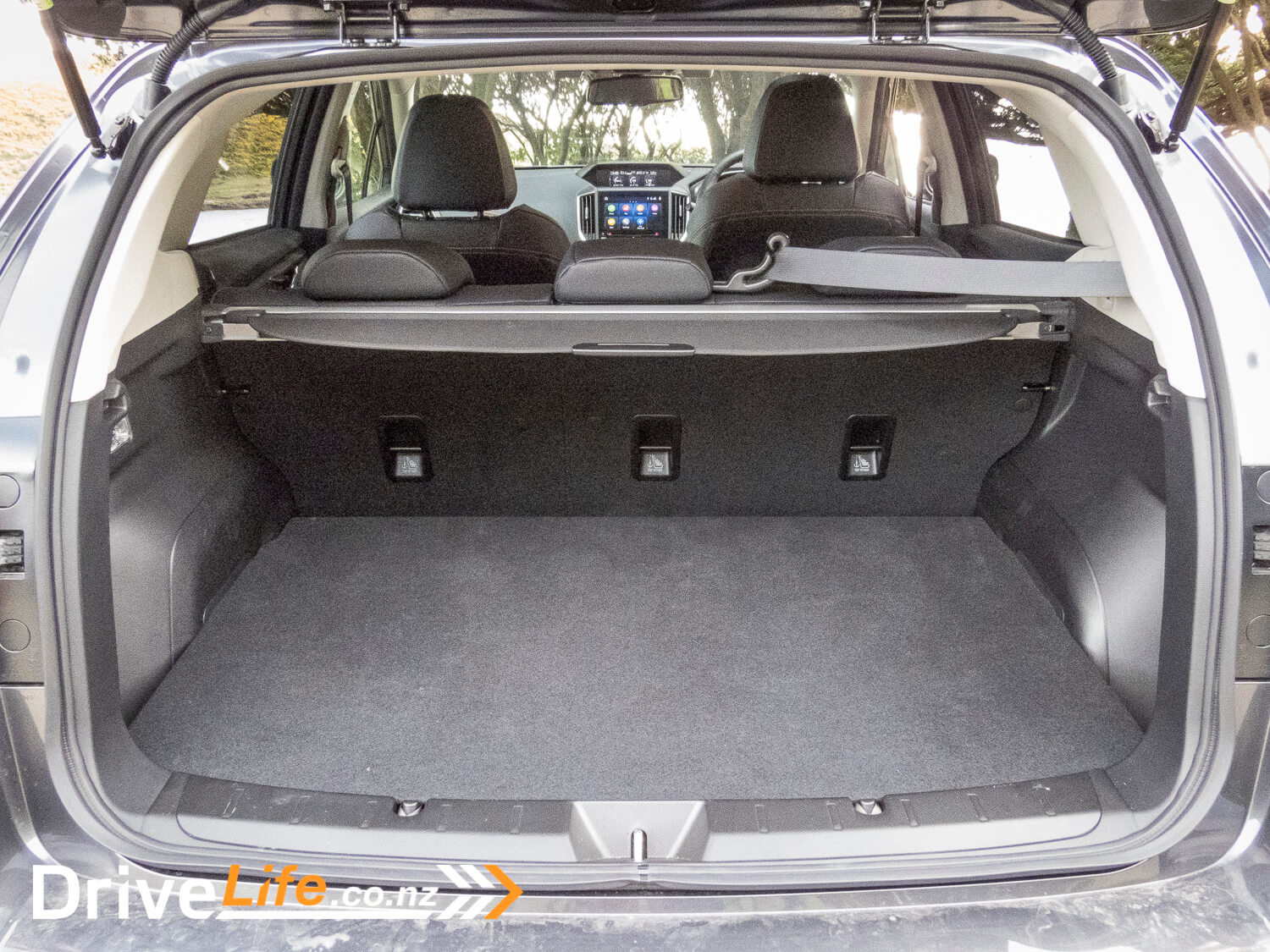
Subaru does equip the XV with roof rails, and if you’re a keen skier or snowboarder, some mounts would be a must. The boot wouldn’t fit our skis or snowboards unless you put the rear seats down. However, we did manage to get our skis across the laps of the passengers in the rear seat, and with some clever negotiating, we also managed to get the snowboards in there too. It wasn’t an ideal set-up, but fortunately, it was only a 15-minute drive from the lodge.
For the most part, the interior is laid out intuitively and everything is easy to find. Although, the XV does have some quirks, in particular, some peculiar button placements.
Much like other manufacturers, Subaru has placed some buttons to switch-off specific features on a dash panel over by the driver. However, Subaru appears to have run out of space, and chose to place buttons to switch off the pre-collision systems and lane departure warnings on the roof, near the sunroof controls. I suppose you’ll never accidentally hit them, but I was a little perplexed by their placement.

Subaru has included a button to fold in the wing mirrors, which is nice. Although, the button will only operate when the vehicle is on, meaning you need to train yourself to click it before you switch off the car. I seldom ended up using it during my time with the XV.
In my opinion, some of the steering wheel controls could benefit from some improvement too. For example, the info button on the steering wheel controls the 6.3’’ multifunction display above the infotainment, whereas the instrument cluster display is adjusted using controls mounted on the steering column. I didn’t find this layout very intuitive, as the steering wheel button falls more naturally to hand and I’m more likely to want to change the menus on the instrument cluster while driving. When I first got the XV, there were a number of times where I reached for the steering wheel button only to change the menus on the wrong screen. There’s also no cancel button for the cruise control, instead you hit the same button to switch it on or off. Overall, the button layout is still reasonably intuitive, but I personally have experienced better designs.
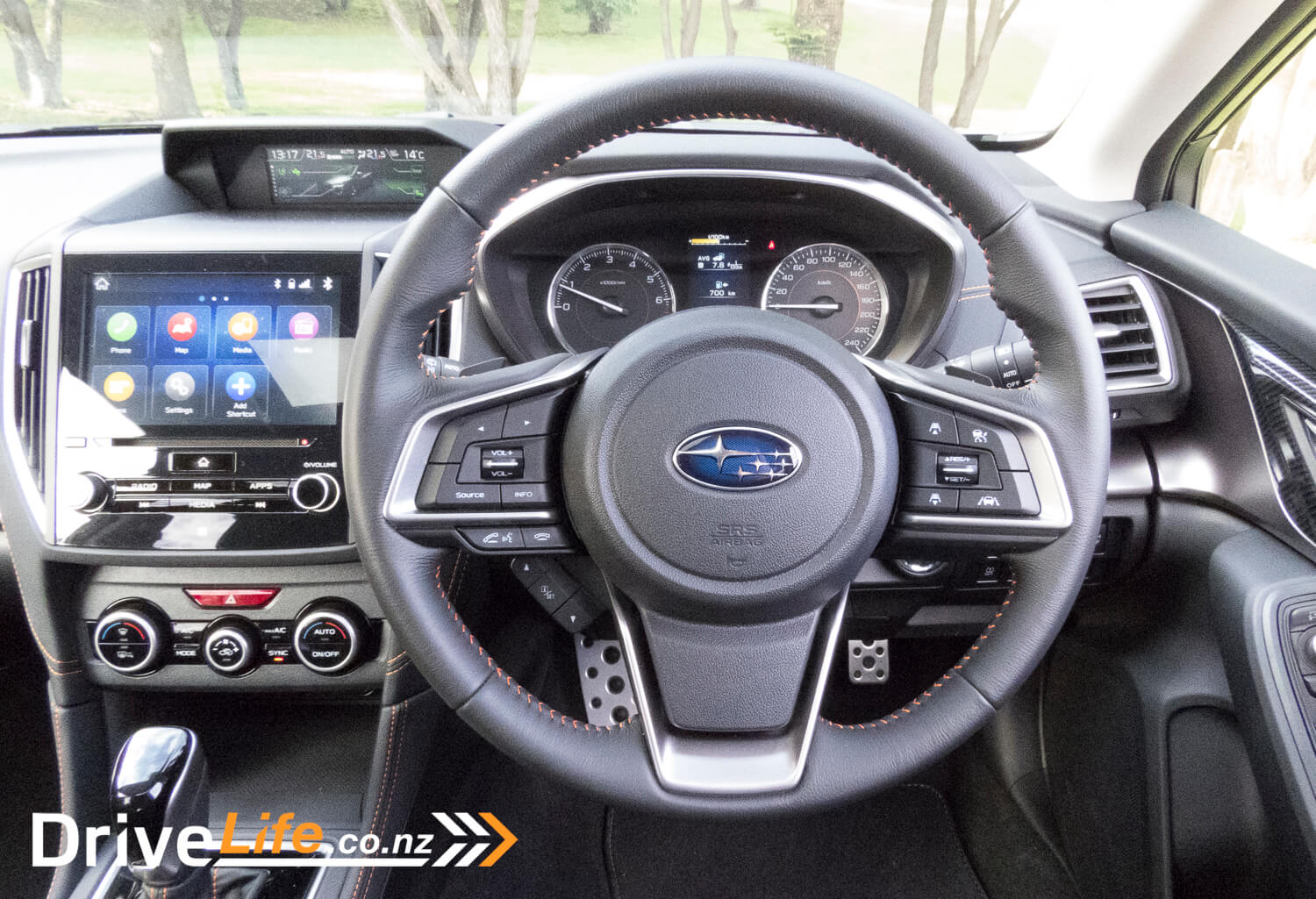
My main complaint with the interior is that the speaker system in the XV isn’t great. Given that good music is an essential for any road-trip, I would like to see an improvement from Subaru here. I’ve also seen XV models offered internationally that can have an 8-speaker Harman Kardon system. So, why not here in New Zealand?
Aside from these quirks and a few odd button placements, there’s really few gripes to be had with the XV’s interior. You will need to learn the layout of a few controls, but otherwise the XV’s interior is good overall, offering a good level of passenger space and comfort, some high-quality touches and an impressive amount of equipment for the price.
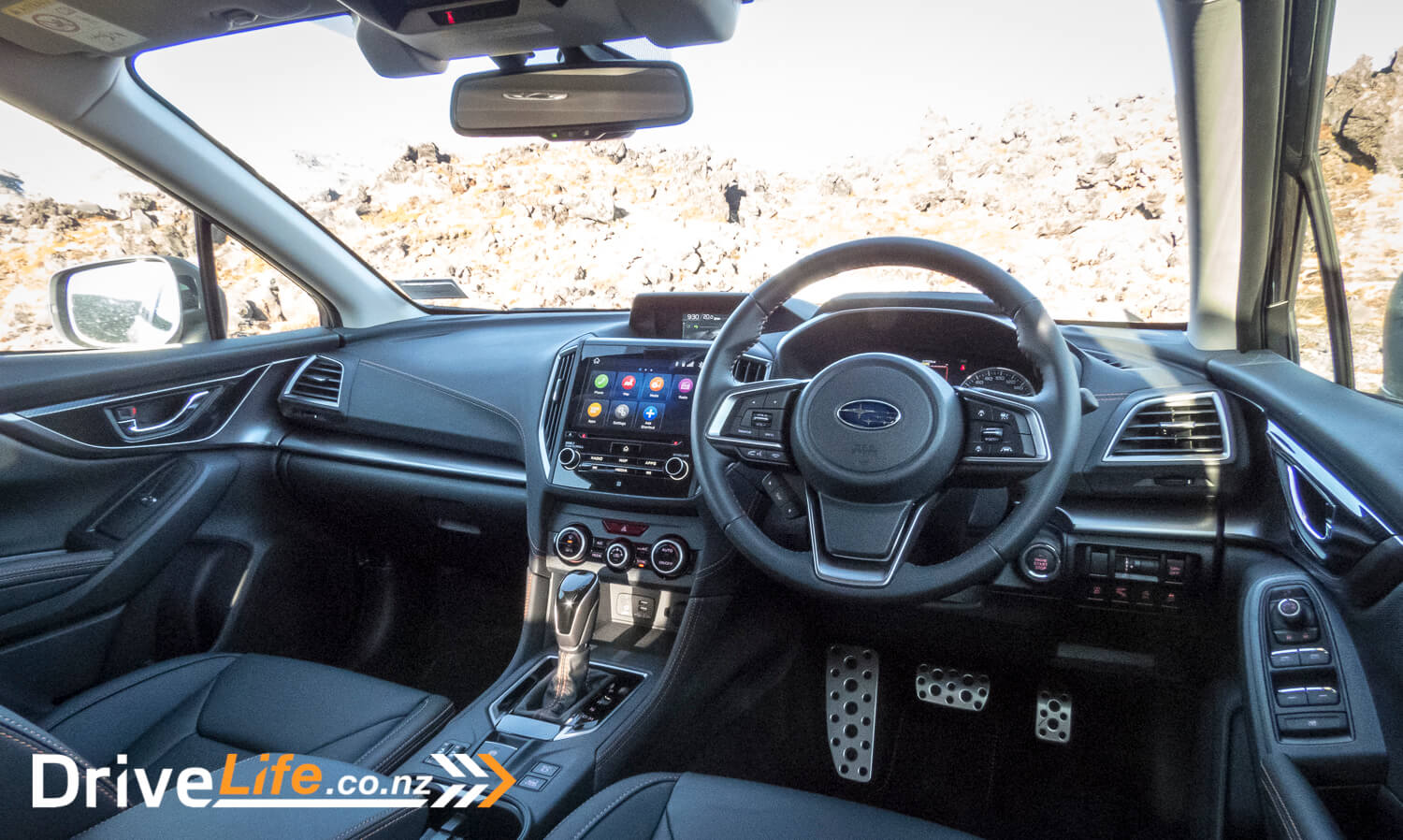
What Does The 2020 Subaru XV 2.0i Premium Drive Like?
If you’re familiar with Subaru’s of old, you’ll be aware of the slight jiggle a horizontally opposed (boxer) engine makes when the vehicle starts cold. This is a trait of boxer engines, and if anything, it adds a bit of character. Subaru has done their best to engineer this effect out of their vehicles over the years, and they’ve largely had success. Although, if you pay close attention, you’ll notice the XV perform the happy tail-wag on a few cold starts. Subaru has also eliminated the distinctive boxer burble many of the engines used to make, which disappoints my inner petrol-head.
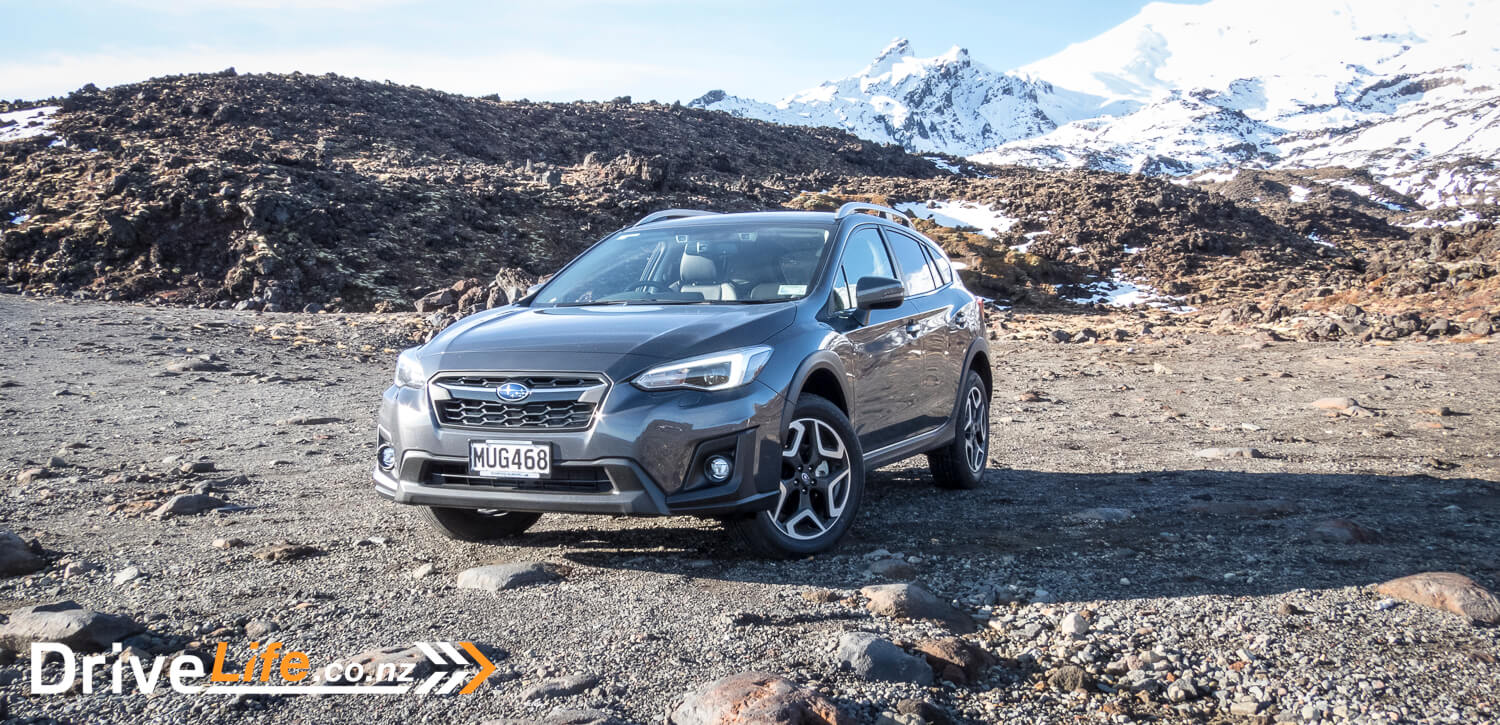
After brimming the tank at our lunch stop, I was rather surprised by the range estimate read-out. Turns out that Subaru has fitted a large 63L fuel tank. For comparison, it’s at least 13L greater than the Kia Seltos and Mazda CX-30, which were the last two crossovers I reviewed. The range estimate suggested we’d get over 730km from the tank at current consumption. For context, it’s 650km from downtown Wellington to Auckland’s North Shore.
Speaking of fuel consumption, Subaru’s claimed combined mileage is 7.0L/100kms for the XV. During my time with the XV, we achieved 7.7L/100kms. I consider this to be quite good for an all-wheel drive, and especially because the car was fully laden with people and luggage for a good portion of it.
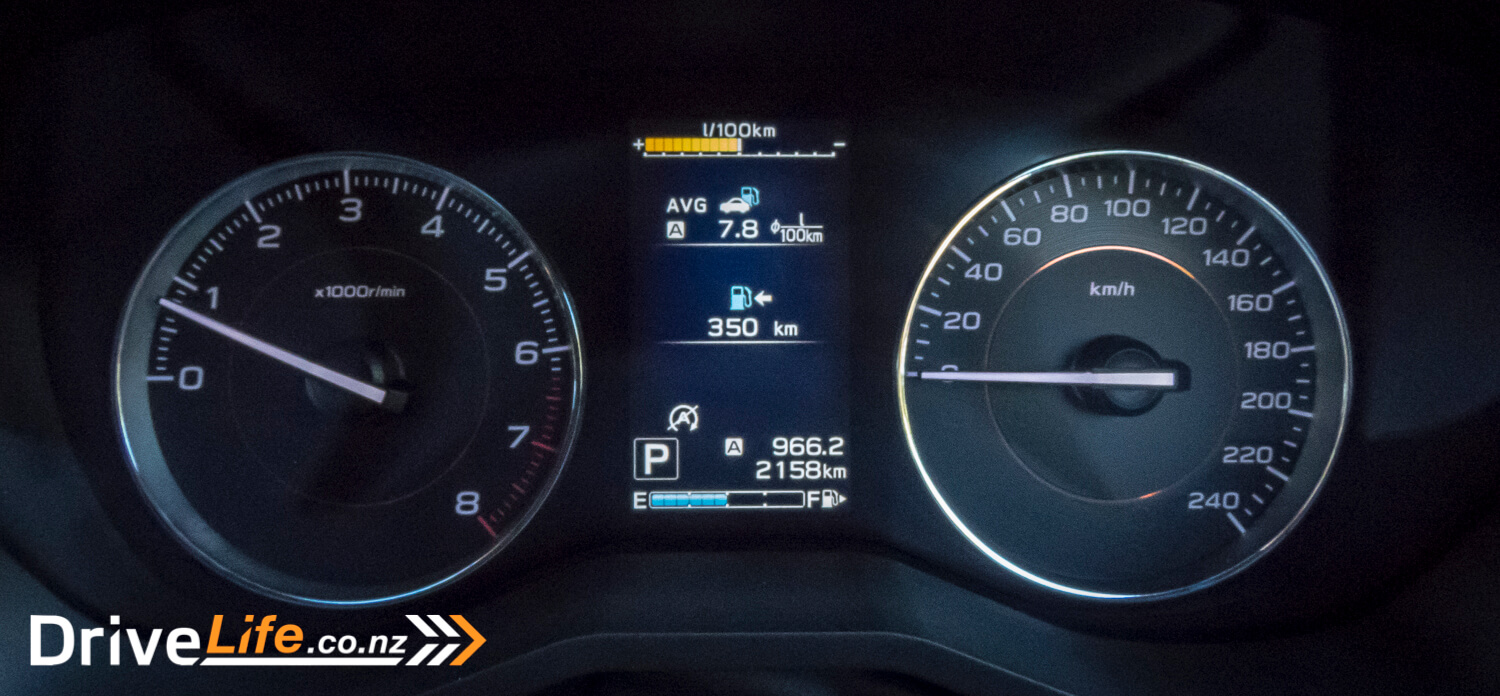
Heading down the roads of the Manawatu towards National Park, I was quickly impressed with the ride and handling performance in the XV. The grip from Subaru’s Symmetrical AWD gives the driver a good sense of connectedness with the road. Combine this with a lowered centre of gravity from the boxer engine, and you have a vehicle that’s well composed on the road. I wouldn’t call the XV a sporty handling vehicle, but it was definitely well-set up for those that want to tour New Zealand. With some faster corners, the XV did feel like it wanted to understeer, but the AWD system did a nice job of pulling it back into line.
The suspension felt well-adjusted for the open road, managing road bumps and uneven surfaces well. The driver definitely has a good sense of how the car was behaving underneath. The heightened ground clearance gives rise to potential for extra body roll, yet Subaru has also done well managing this. The XV kept its composure on twisty sections, performing well on the climb up the mountain. Steering response also felt decent, and I was rather surprised by the XVs level of brake feel for a car in this segment. On the other hand, road noise wasn’t as well managed, but I wouldn’t call it bad by any stretch.
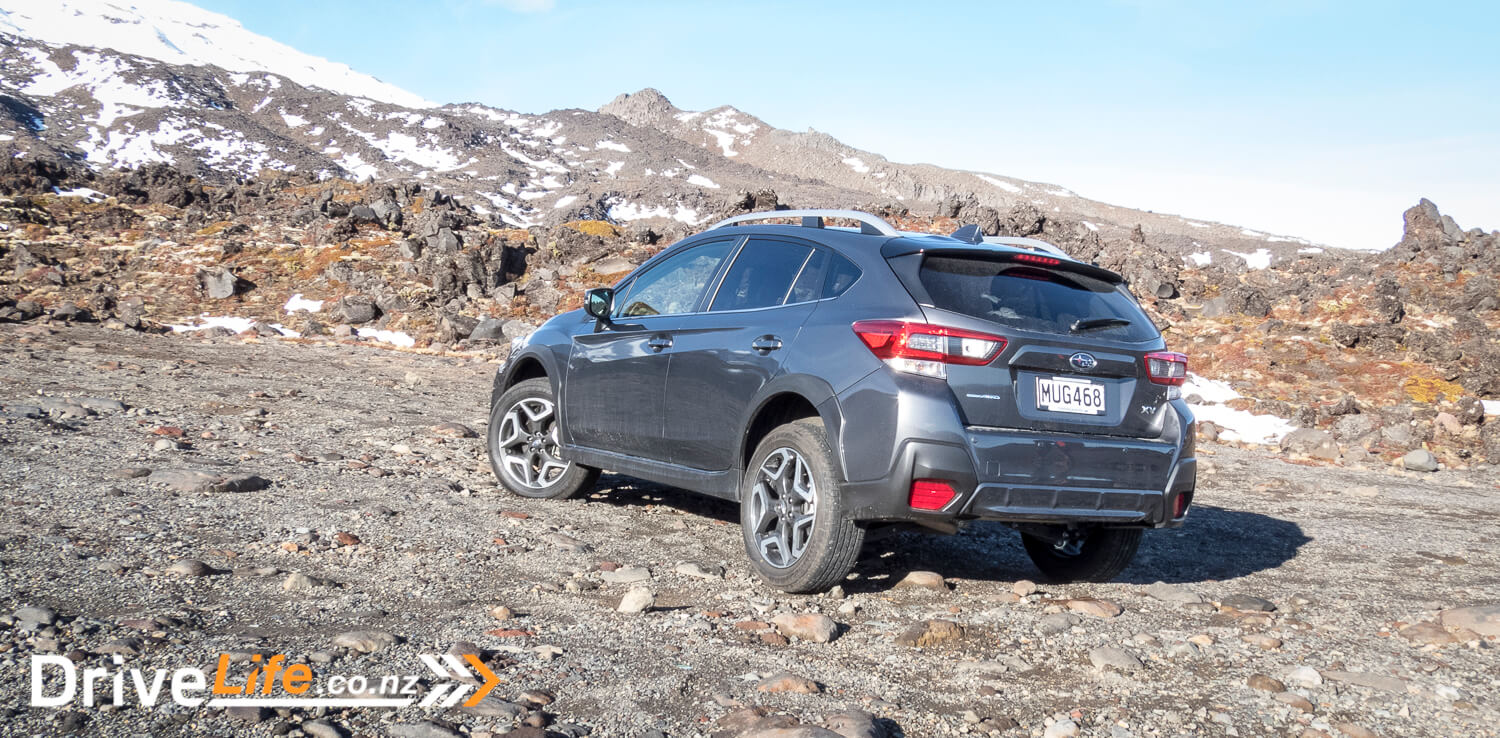
As mentioned, the Subaru XV range uses a 2-litre 4-cylinder boxer engine, developing 115kW of power and 196Nm of torque, paired to Subaru’s Lineartronic CVT transmission. This is the same engine and gearbox combination that’s used in the Subaru Impreza and the rest of the XV range.
Does the engine from the Impreza do the trick? This is a fair question given the XV weighs an extra 70 kgs over the Impreza and given that energy demands from any AWD system are greater compared with those from front-wheel drive vehicles.
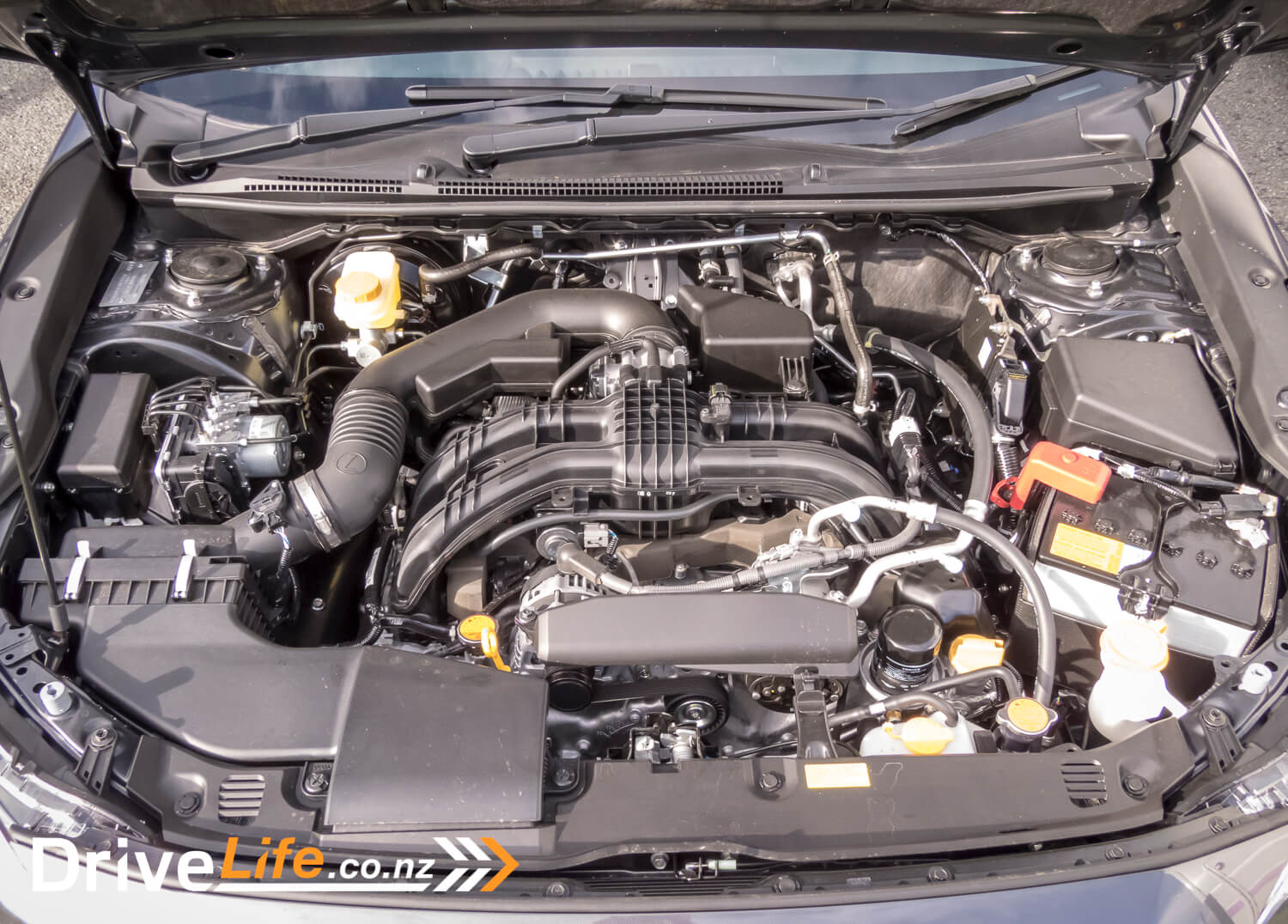
On paper, the output of this engine puts the XV roughly on par with many other crossovers in this segment, and in reality, I would describe the engine performance offered by the XV as adequate. Around the streets of Wellington, there was little to complain about. There’s a decent amount of low-end torque to get you moving, but I wouldn’t call the XV agile either. The vehicle does feel as though it’s carrying a bit of weight with low speed manoeuvring.
Out on the open road, there were times when the XV felt a bit lethargic. Even without passengers, the engine does feel slightly laboured when high-up into the rev range. Put your foot down, you’ll get an initial surge of power, but after shifting, there’s not much more power after that. It feels as if it bogs down and drops slightly down the powerband. The engine also does make quite a bit of noise when you get on the accelerator, which might lead you to expect a bit more oomph from the engine. There was definitely enough power to make do, but on the Taihape passing lanes, it did feel like you were using most of the XV’s surplus power.
Overall, the engine performance was about what you’d expect from a vehicle in this segment, and many close rivals wouldn’t be much better under the same conditions. Considering Subaru does carry the outdoorsy, adventurous lifestyle with their brand, it’s reasonable to think that many of their intended buyers would want to take their vehicle cross-country. I’m sure that many of these buyers would appreciate just a little extra in that high mid-range.
Engine performance aside, I had no complaints with Subaru’s Lineartonic CVT system. The system shifted quickly, and there wasn’t any notable hang in the high rev range, nor was it slow off the line.
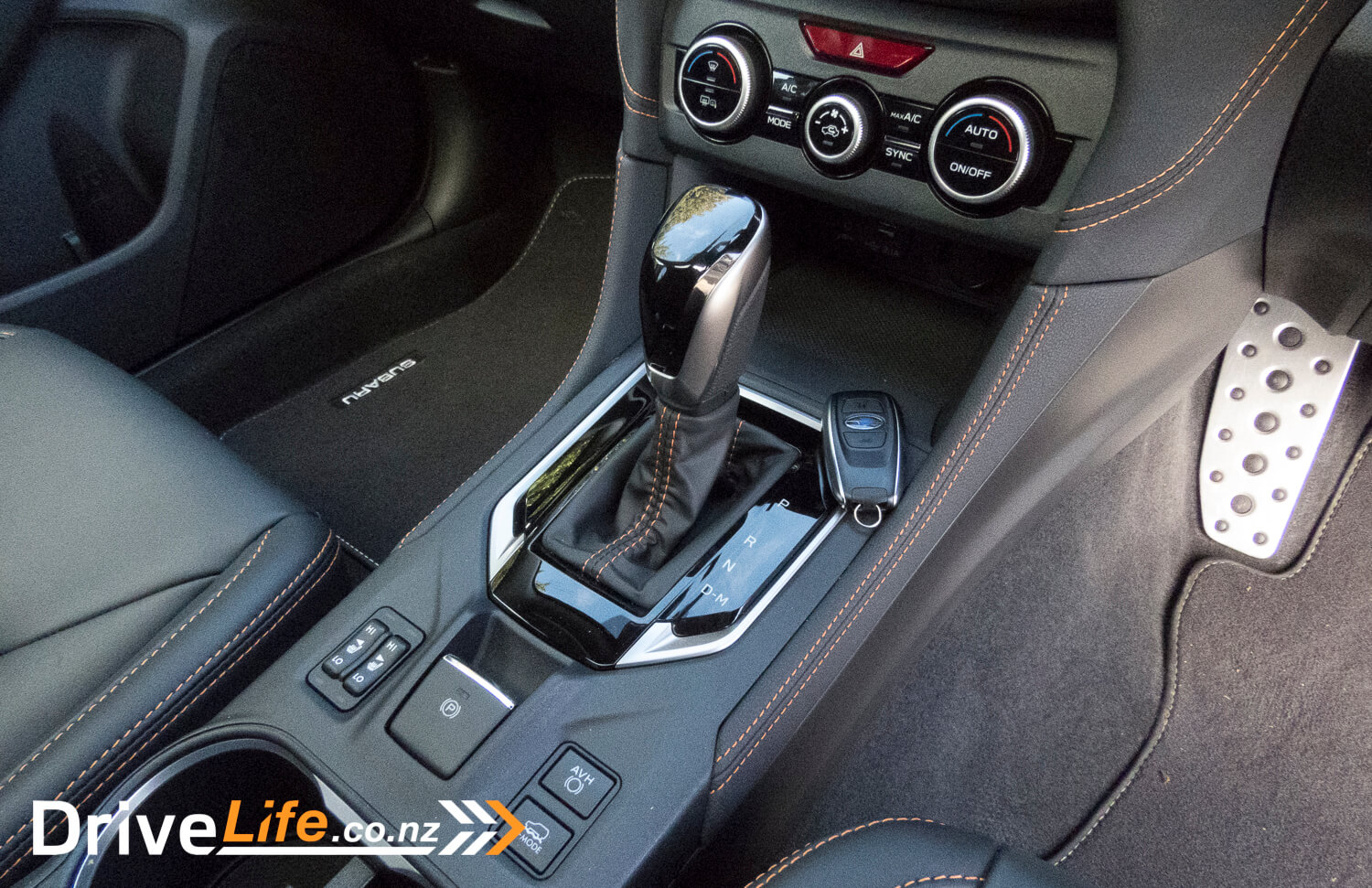
The XV also has an off-road driving mode, which Subaru calls X-mode. Under 40km/h, this mode tightens up the limited-slip differential, and helps vector power to the wheel that needs it. It also firms the brakes and reduces the throttle response to reduce the chance of traction loss or wheel slip. Under 20km/h, hill descent control becomes available. The XV is not full hardcore off-roader, with locking diffs and the like, but all these features should guarantee some capability on rougher terrain.

I did not get to test X-mode during my time with the XV, but I have little doubt that this mode, combined with Subaru’s proven symmetrical AWD, would give it superior off-road capability compared to competitors. It was also reassuring to have the capability for the journey, considering they sometimes limit the road up to Mt Ruapheu to 4WD’s only after heavy snowfalls.
Safety wise, Subaru uses their own system called Eyesight, which uses a series of cameras mounted under and around the rear vision mirror, along with some clever software, to operate many of the driver aids and safety functions. This includes the radar cruise control, lane-keep assist and others.
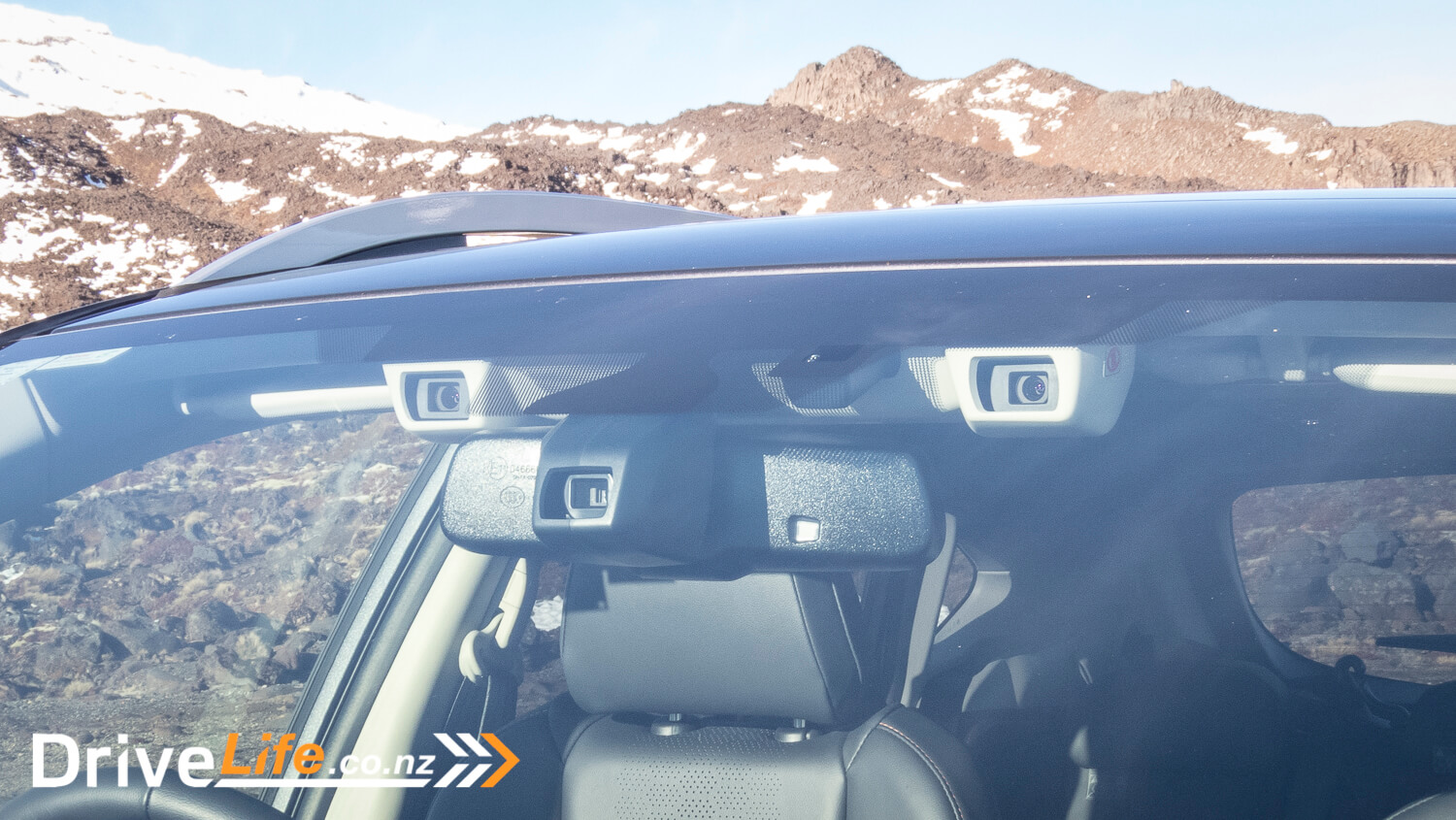
This is another example of Subaru taking a slightly different approach, as rivals which offer similar features will generally use forward facing radars. usually integrated into the badge or bumper.
So, does the different approach work well? Yes. Absolutely.
The radar cruise system in the XV operates the accelerator and brakes smoothly, and will work down to a stop. A tap of the throttle or a flick of the switch on the steering wheel will start it up again. I also appreciated some of the little details from the onboard displays, which shows a vehicle graphic when the XV had locked onto another vehicle, and even showed the rear lights lit up when the radar cruise operated the brakes.
One detail I didn’t appreciate as much was that the radar cruise would beep every time it locked onto a new vehicle. I’m not sure why Subaru does this – it’s unnecessary at the very least, and probably annoying for some drivers.
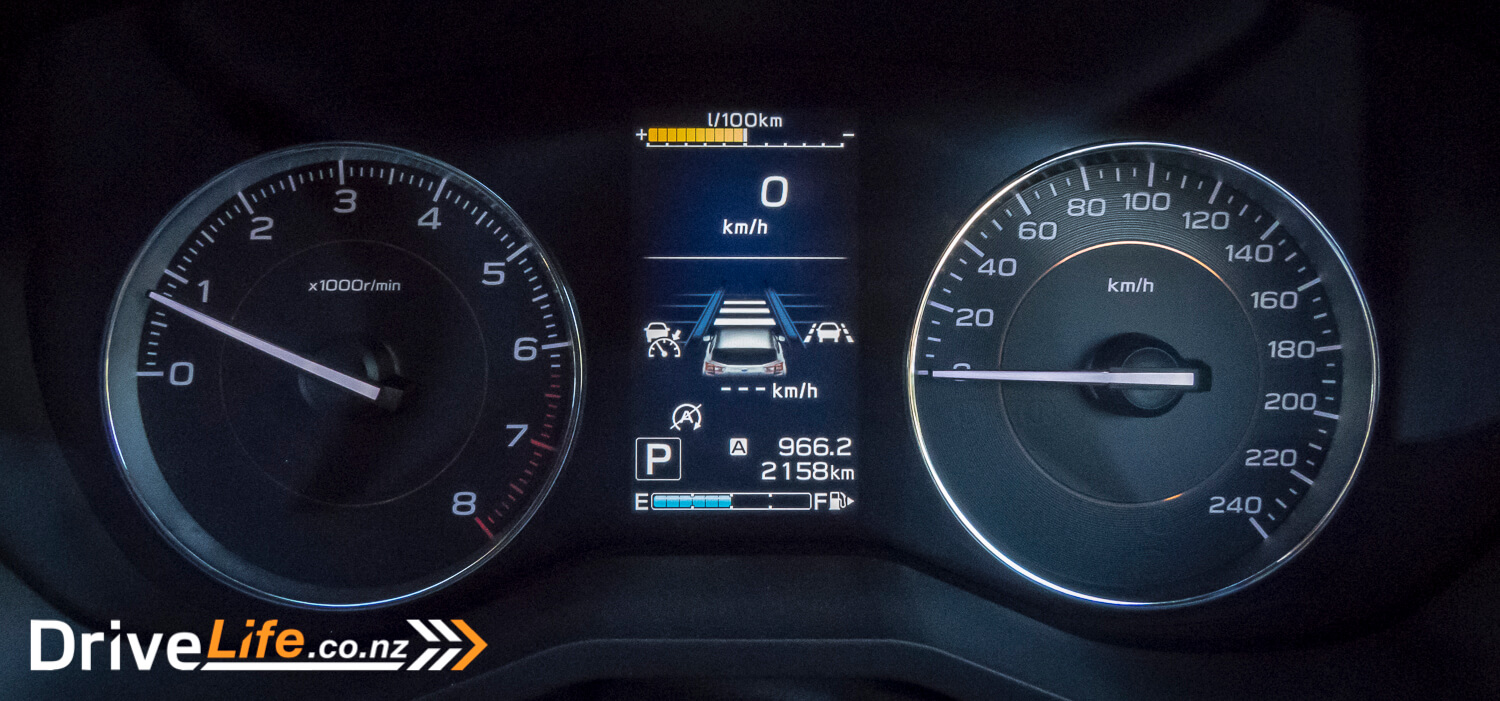
The lane-keep assist does not come on by default when you start the vehicle. Instead, you need to switch it on using the button on the steering wheel. I honestly prefer this set-up, as sometimes lane-keep functions can be a nuisance on our tight roads. When operating, the lane keep inputs were gradual and weren’t too assertive.
I can even attest to the effectiveness of the pre-collision warnings, after a well-intentioned motorist came to a dangerous halt in the middle of an 80kph zone on state highway 1 to allow another motorist out of a carpark. The system managed to prompt me well in advance of the imminent obstacle.
What’s The Competition For The 2020 Subaru XV 2.0i Premium?
Compared with close rivals, the Subaru XV Premium comes in at the lower end of our table. Impressive considering the features which are offered.
| Brand/Model | Engine | Power (kW)/ Torque (Nm) | Economy, L/100km (claimed) | Seats | Boot Space, Litres | Towing Capacity Kg | Price |
| VW T-Roc R-Line (AWD) | 2.0-litre turbocharged 4-cylinder | 140/320 | 6.8 | 5 | 390 | 1700 | $52,990 |
| Seat Ateca FR (AWD) | 2.0-litre turbocharged 4-cylinder | 140/320 | 6.9 | 5 | 485 | 1900 | $51,990 |
| Mazda CX-30 Limited (AWD) | 2.5-litre 4-cylinder | 139/200 | 6.8 | 5 | 422 | 1200 | $50,990 |
| Jeep Compass Limited (AWD) | 2.4 litre 4-cylinder | 129/229 | 9.7 | 5 | – | 1000 | $46,990 |
| Kia Seltos Limited (AWD) | 1.6-litre turbocharged 4-cylinder | 130/265 | 7.6 | 5 | 433 | 1250 | $46,990 |
| Peugeot 2008 GT (FWD) | 1.2-litre turbocharged 3-cylinder | 115/240 | 6.1 | 5 | 434 | 1200 | $45,990 |
| Nissan Juke Ti (FWD) | 1-litre turbocharged 3-cylinder | 84/180 | 5.8 | 5 | 422 | 1250 | $44,990 |
| Hyundai Kona GDi Elite (AWD) | 1.6 litre turbocharged 4-cylinder | 130/265 | 6.7 | 5 | 361 | 1250 | $42,990 |
| Skoda Kamiq Monte Carlo (FWD) | 1.5-litre turbocharged 4-cylinder | 110/250 | 5.5 | 5 | 400 | 1250 | $42,990 |
| Subaru XV Premium (AWD) | 2.0-litre horizontally opposed 4-cylinder | 115/196 | 7.0 | 5 | 310 | 1400 | $42,490 |
| Mitsubishi Eclipse Cross (AWD) | 1.5-litre turbocharged 4-cylinder | 112/254 | 7.7 | 5 | 374 | 1600 | $40,990 |
| Honda HR-V Sport NT (FWD) | 1.8-litre 4-cylinder | 105/172 | 6.9 | 5 | 437 | 800 | $40,990 |
| Mazda CX-3 GSX (AWD) | 2.0-litre 4-cylinder | 110/195 | 6.7 | 5 | 264 | 1200 | $38,695 |
| Toyota C-HR Limited (AWD) | 1.2-litre turbocharged 4-cylinder | 85/185 | 6.5 | 5 | 318 | 600 | $37,990 |
| Suzuki Vitara Turbo (AWD) | 1.4-litre turbocharged 4-cylinder | 103/220 | 6.2 | 5 | 375 | 1200 | $37,990 |
| Mitsubishi ASX VRX (FWD) | 2.4-litre 4-cylinder | 125/226 | 7.9 | 5 | 393 | 1300 | $34,990 |
What’s The Pros And Cons For The 2020 Subaru XV 2.0i Premium?
Pros
- Subaru balance and ride
- Level of equipment for price
- Supportive seats
- Good radar cruise
- Off-road capability and ground clearance
- Exterior looks and cladding
- Spacious rear passenger space
- Large fuel tank
Cons
- Beeps on radar cruise
- Some awkward button placements
- Performance in mid-to high range
- Engine noise under power
- Average stereo
2020 Subaru XV 2.0i Premium – Specifications
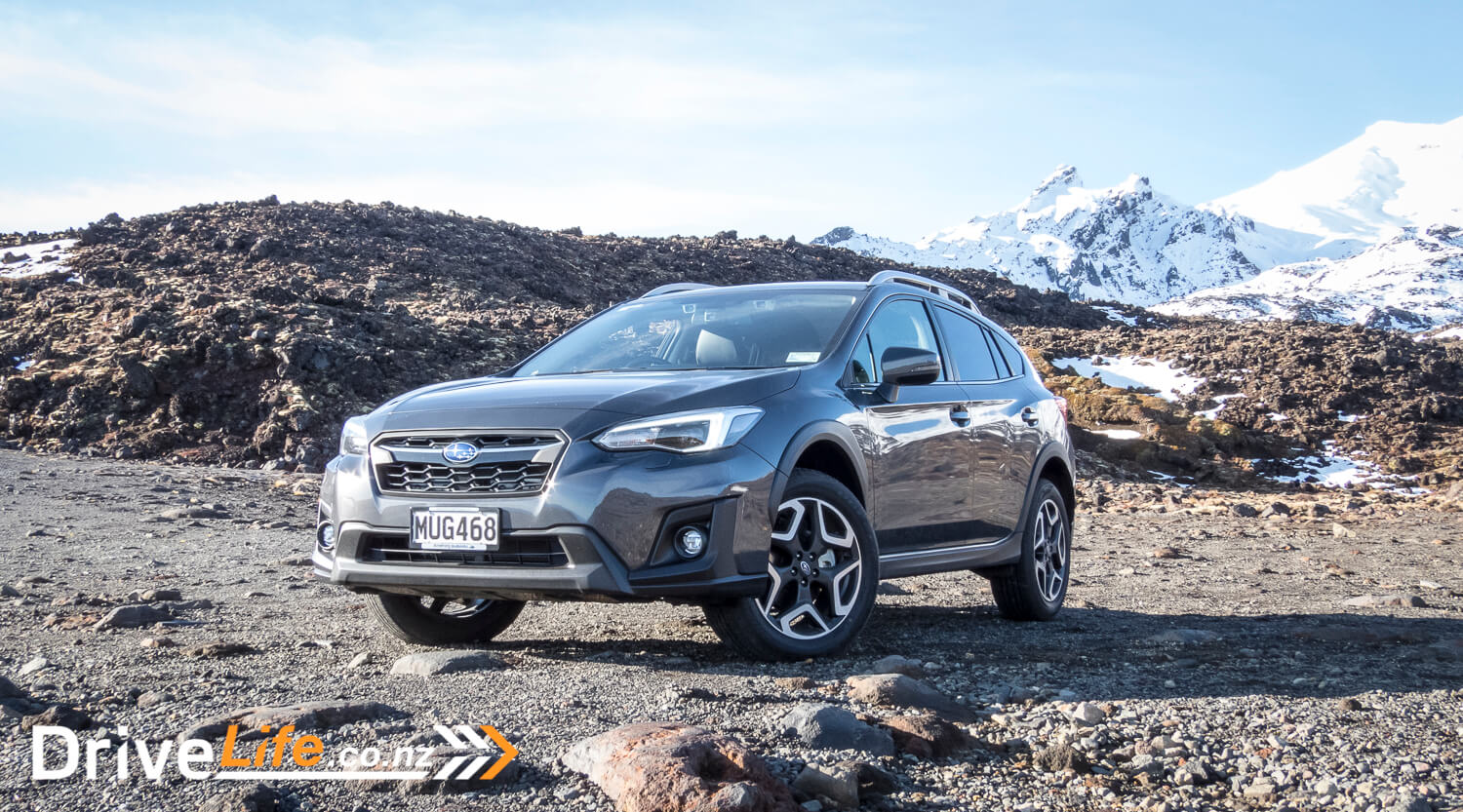
| Vehicle Type | 5-door compact SUV |
| Starting Price | $42,490 |
| Price as Tested | $42,490 |
| Engine | 2-litre Horizontally-opposed Boxer 4-cylinder, petrol engine |
| Power, Torque kW/Nm | 115/196 |
| Transmission | Lineartronic SLT with manual mode (Continuously Variable Transmission) |
| Spare Wheel | Space saver |
| Kerb Weight, Kg | 1,484 |
| Length x Width x Height (mm) | 4465 x 1800 x 1615 (height including roof rails) |
| Cargo Capacity, litres | 310/765 |
| Fuel tank Capacity litres | 63 |
| Fuel Economy L/100km | Advertised Spec – 7.0 Real World Test – 7.8 |
| Towing Capacity Kg, unbraked/braked | 650/1400 |
| Turning circle, metres | 10.8 Small: 6-10m / Medium 10-12m / Large 12m+ |
| Warranty | 3 year / Unlimited km manufacturer’s warranty |
| ANCAP Safety Ratings | 5 Star |
